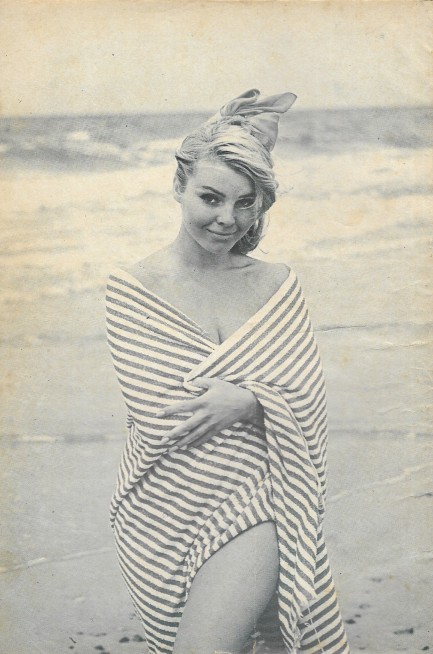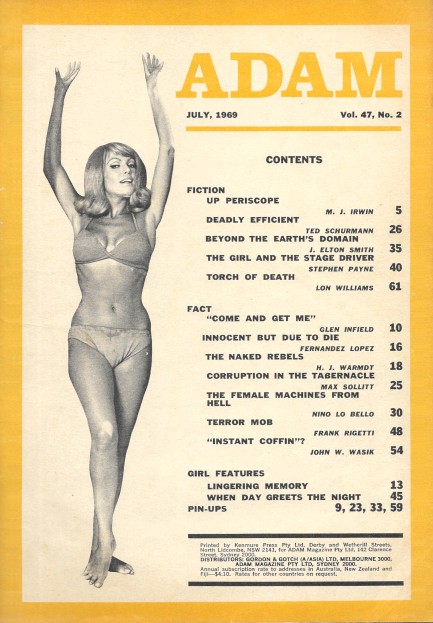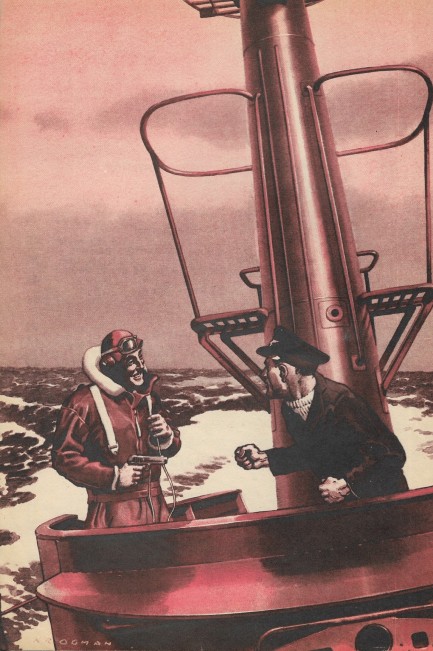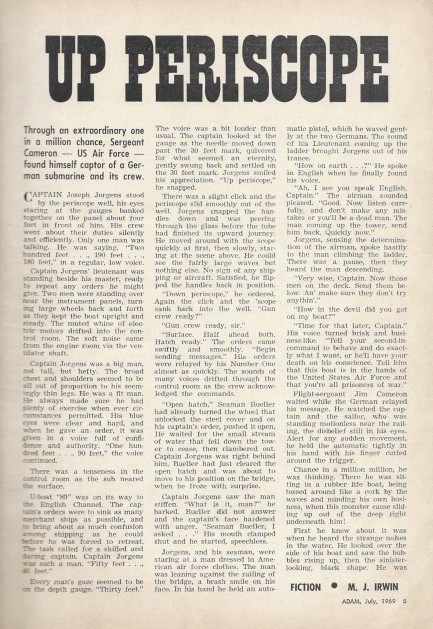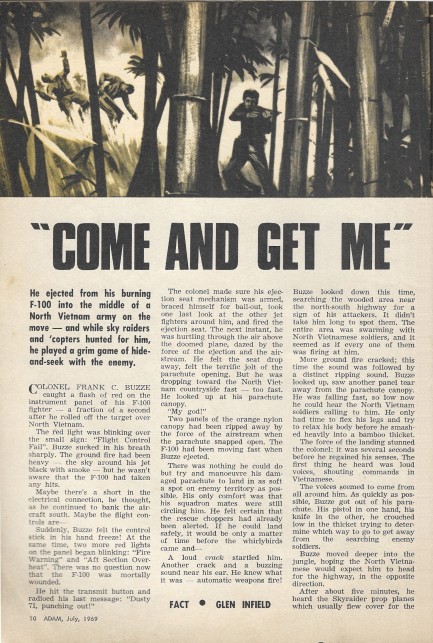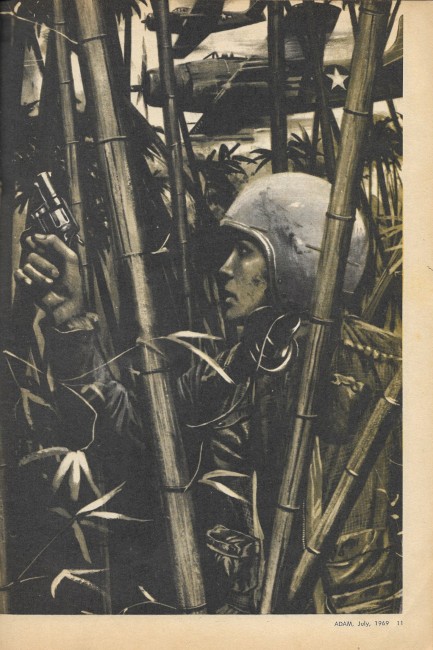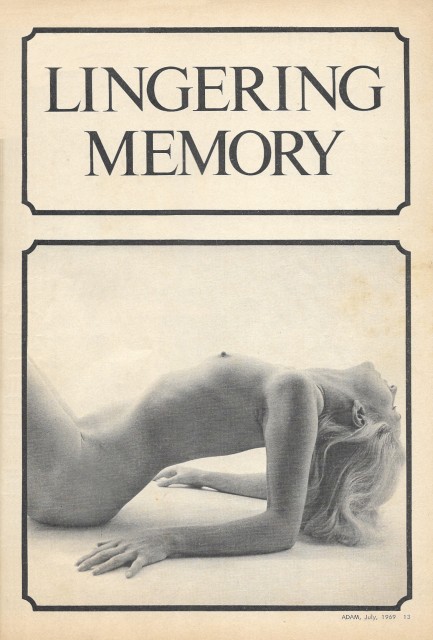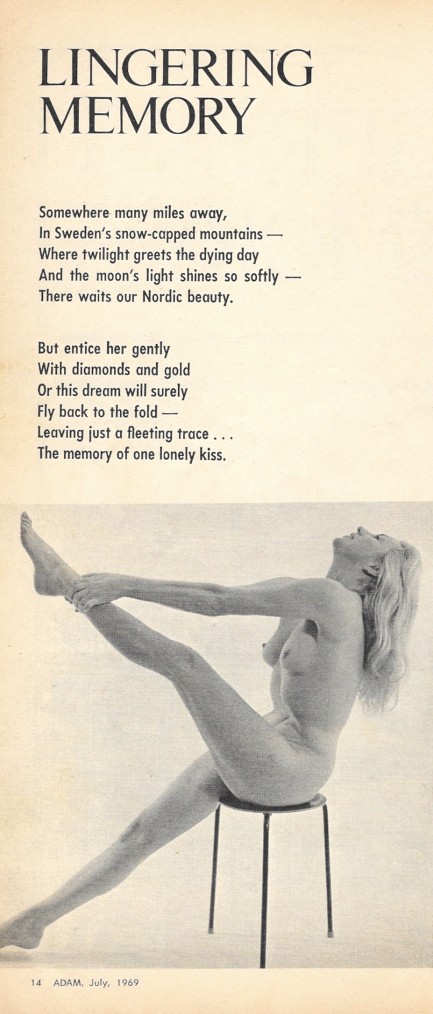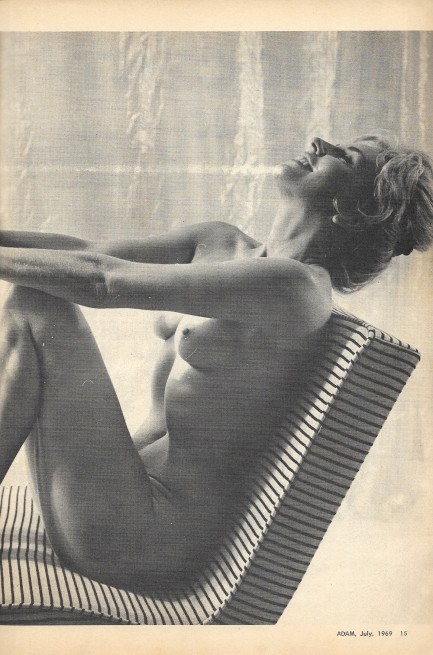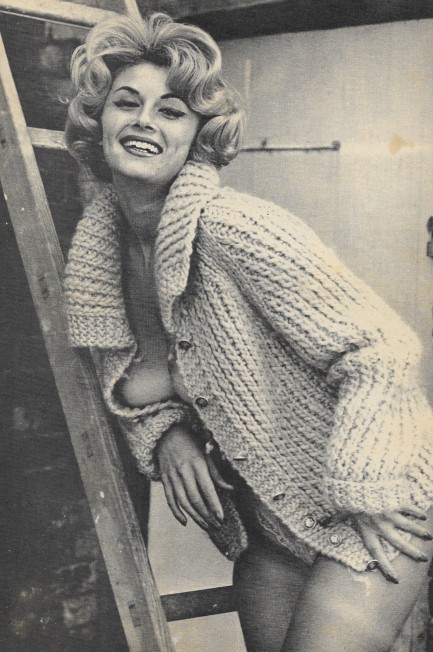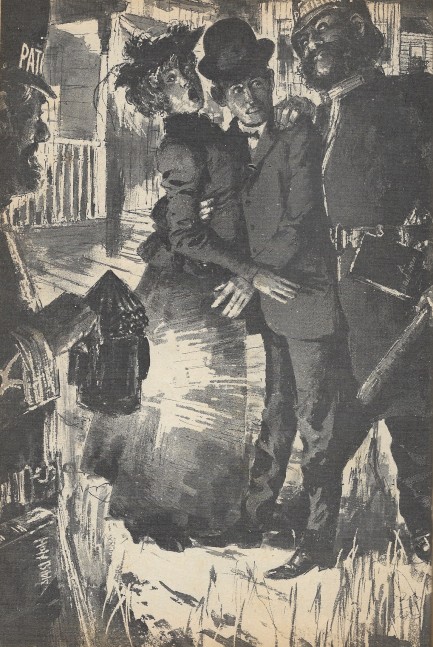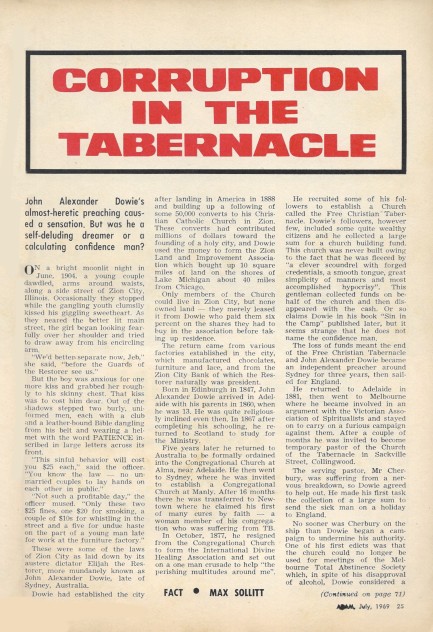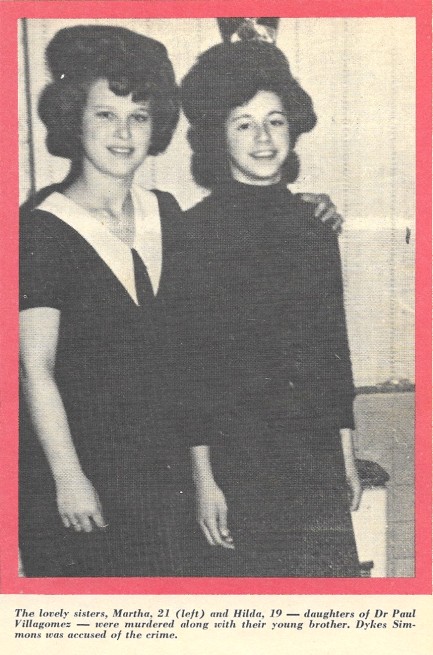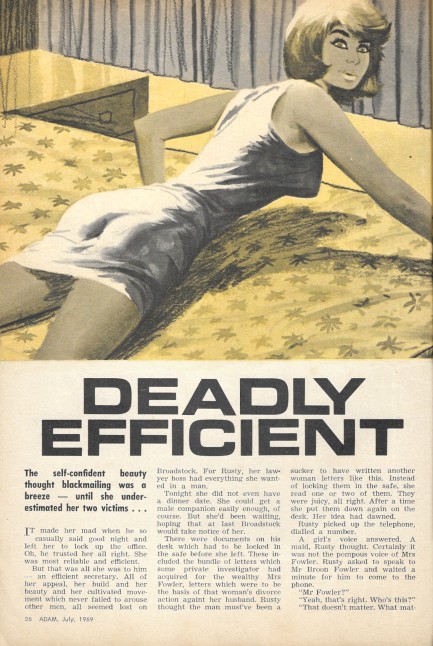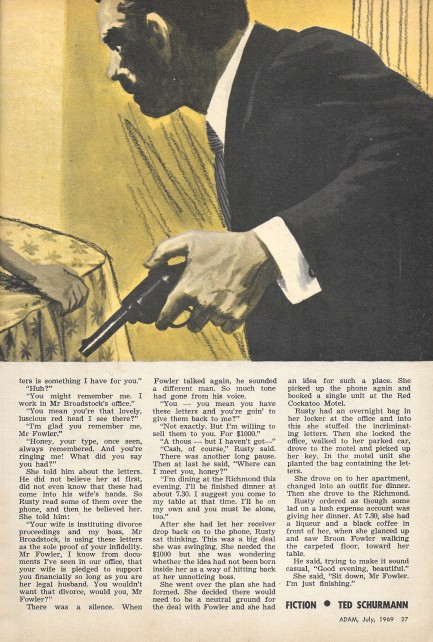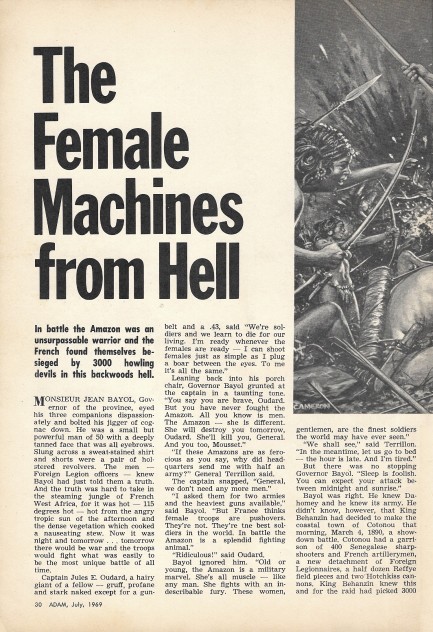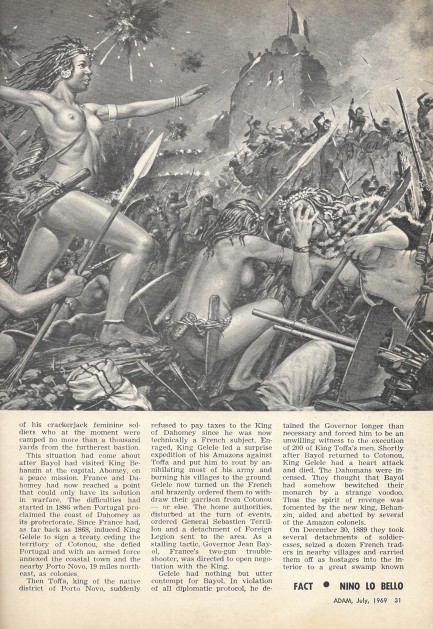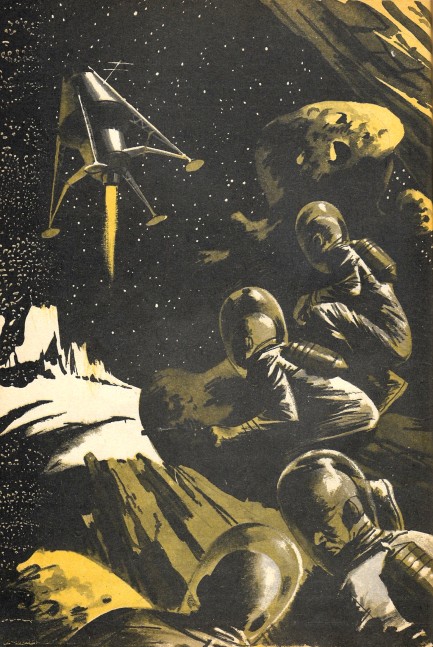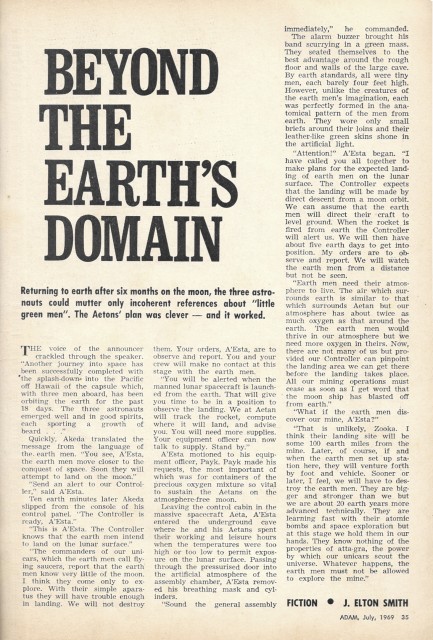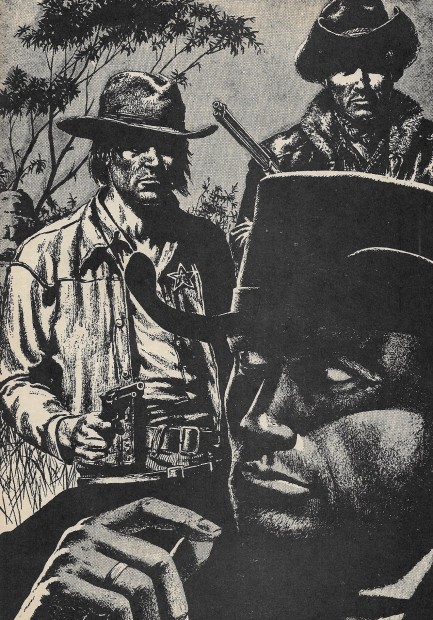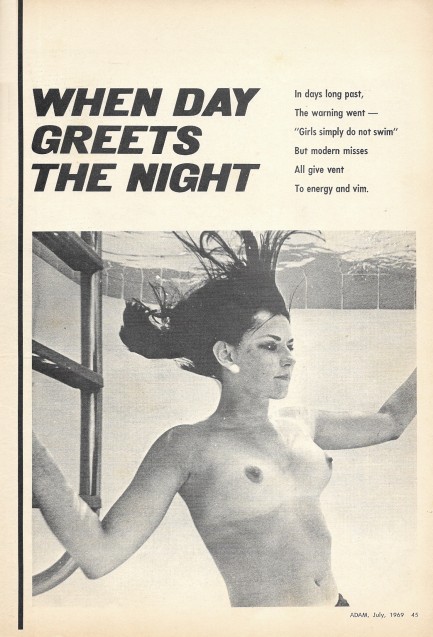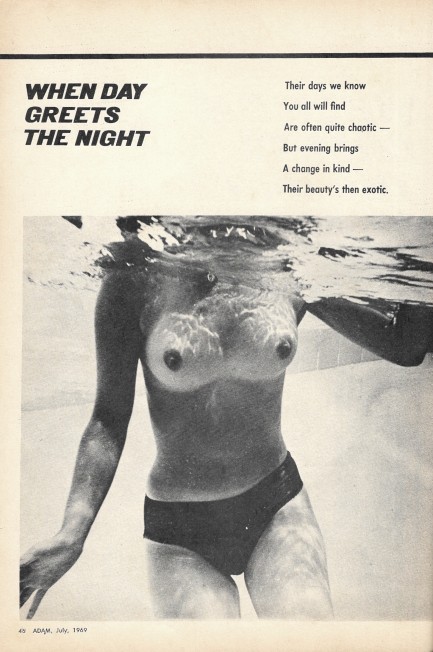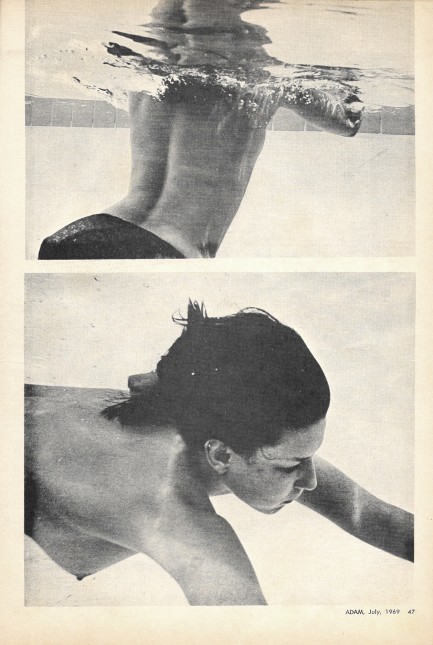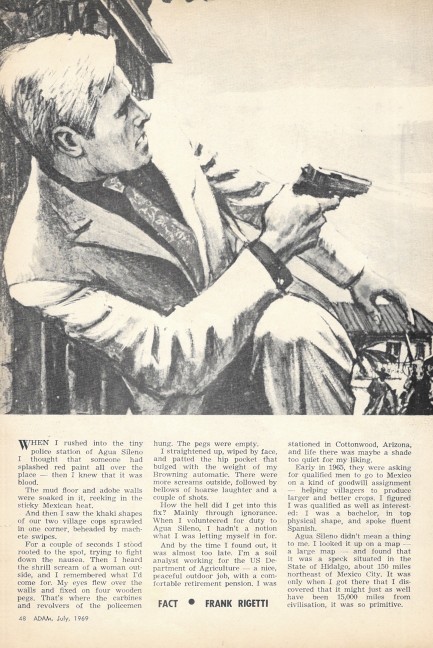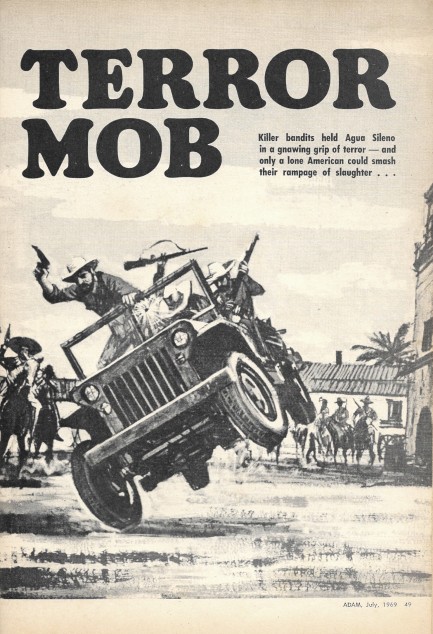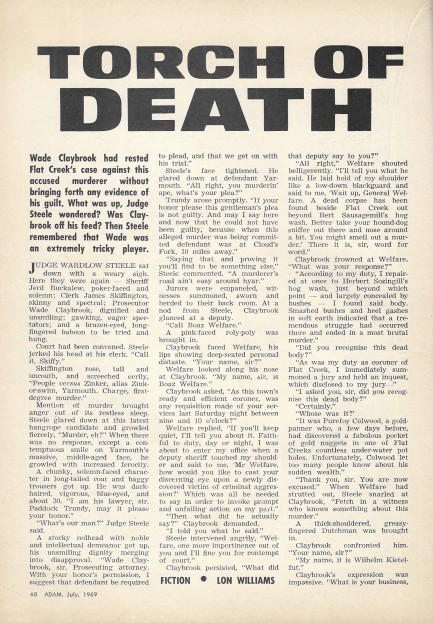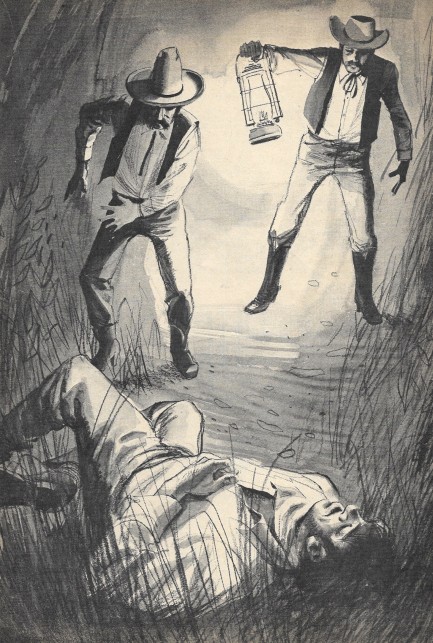 Get outta the frickin' way you lunatic! Are you out of your goddamned— Oh. I mean... need a lift? 
We're going back-to-back with Adam magazine. We posted one yesterday, but we have another because, despite the fact that this is the eighty-sixth issue we're sharing, we have a stack yay high we still need to get to. At this point we'll make the claim—without any proof whatsoever, but hey, that just means we're in step with the times—that we have more copies of Adam under our roof than any other place in the world. Prove us wrong. It's all the more impressive considering we don't live in Australia, where the magazine originates, and have needed to ship them wherever we were living at the time, currently (and permanently?) Spain.
Today's issue from this month in 1977 has the slightly more streamlined look the magazine moved toward as it approached its mid-1978 dissolution. The cover illustrates Jay Ruth's story “The Third Run.” We were eager to learn why the femme fatale crossed the road. It wasn't to get to the other side. She was trying to keep from being flattened, and not in the road as we assumed, but in a warehouse. In the story, she's part of a truck hijacking ring, and to her misfortune, she chooses as her newest victim an undercover operative posing as a truck driver. He'd been out there hoping to lure the hijackers, and on his third run he did. It's a pretty good story.
It wouldn't be an issue of Adam without models, and you get plenty here. By 1977 it was go full frontal to survive in the men's mag market or quit, and Adam quit—though resisting the shift to porn was probably only one of many considerations (moving to color and glossy page stock were probably others) However, though Adam never went all the way, one of the models wearing a bikini shows a bit of overflow bush and a treasure trail. Many times with later issues of Adam we're able to identify a model or two, but all the ones here are unknown to us. We're especially intrigued by the woman on the title page, with her short-shorts, superhero boots, and spectacular hair. Seems like, given the crucial masthead position, we should know who she is, but no such luck.
As a side note, we got an e-mail about our scans recently, another request for larger dimensions. We don't have the capability to do that easily, do to our website's design. We did offer a large scan once, a while back, for something special, but it was one image, not dozens. We couldn't even begin to do it for multiple images. Really, we're glad it's beyond the realm of practicality to change our scan sizes—for reasons already stated. But hey, at least we have a lot of them. Forty-plus panels worth, below. Please enjoy. Edit: the mystery woman is Minah Bird, a Nigerian born model and bit-part actress, whose onscreen credits include The Stud, Old Dracula and Four Dimensions of Greta.
                                        
 Get the right two people together and the heat can set the world on fire.                                
Above: an issue of Adam magazine with another beautiful cover by Jack Waugh or Phil Belbin, illustrating C.H. Christie's story, “Deal of Death.” It's about a man named Grover Singer who's in debt and fakes his own death for $50,000 in insurance money (about $325,000 today). He does it by crashing his car with another man inside, but his wife knows right away the body isn't his. She doesn't tell the police, though, because she's been having an affair and recognizes the opportunity to run away with her lover and the cash. All that needs to happens is for someone to kill Grover for real. That's what lovers are for.
Also of note is the factual story “Doctor in Disguise.” The illustration give the disguise away. It's about a nineteenth century doctor named James Barry who practiced for forty years and upon death was revealed to be a woman. The long subterfuge involved everything from pretending to shave every morning in order to explain her smooth face to surviving a duel. In 2024, as women's rights remain under sustained attack, there's an opportunity built into this story for extensive commentary, but you know where we'd go, so pretend we went there and we'll let you get on with your Saturday. More from Adam soon.
 She's a true professional. She doesn't care who shot who. She just gives to the utmost of her ability. 
We have yet another issue of Adam magazine for you, published this month in 1971, with a cover illustrating Dick Love's story, “Night Nurse.” Generally the magazine's covers showed literal scenes from the fiction, but this one is more of a composite, with the nurse superimposed atop a scene of earlier violence. The story is about a cop who's shot multiple times and almost killed, is nursed to health during two months in the hospital, and upon his release tracks down his almost-killer. It has a present-moment framing device in which, first, a shotgun blast tears open a door he's standing just to one side of, sending his mind into a long reverie about the earlier wounding and recovery, before returning to him crashing through the door and taking down his quarry. The nursing aspect involves some sexual healing, but isn't cheesy or obvious. Instead, there are weeks of talking at bedside before the deed happens, and the mood and pacing are generally good. So it's nice work from “Dick Love,” whoever he or she may have been in reality. We have thirty-plus scans below, and those with sharp eyes and good memories will notice British glamour beauty Susan Shaw in the middle pages and again at the end. More from Adam soon.
                               
 I've never been a fan of lingerie, but your nightgown elevates this whole abduction into something really special. 
This issue of Australia's greatest men's magazine Adam reached newsstands this month in 1974. The cover illustrates Alexander Tait's story “The Catch,” about a boat captain who's given a slow-acting poison in order to ensure his compliance in a smuggling scheme. Adam covers were always painted to order, and that's especially clear here because not only does this lingerie bondage scene occur in the narrative, but the woman is described as having hair that “stuck out in all directions in some kind of afro style.”
What didn't stick out in the story was a lot of talent or imagination, but that's okay—there's always another thing to enjoy in these mags. For example, we thought “Sex and Serpents” was rather interesting. It's a factual story written by Paul Brock about snakes and sexual symbolism. Brock discusses cultures from ancient Egypt to modern Burma, and reveals that snakes are sometimes pickled or powdered. Our favorite anecdote involves an Appalachian preacher who allegedly used a live snake to beat three men and a woman into repentance for sexual sins. Afterward he probably beat his own snake. You know how it goes with these types.
Elsewhere in the magazine are the expected assortment of nude and semi-nude models, but one of them (panel eight below) is a photographed head and arms atop an illustrated torso. Can't say we've seen that before. Maybe she had a rash that day. Or maybe she refused to pose nude. Imagine her surprise when the issue hit the racks. We can only hope she beat the photographer with a snake. Moving on, there's art by Jack Waugh, and few cartoons that made us smile. Not laugh, mind you. Just smile. Scans below, and we'll be revisiting Adam later this month.                              
 This is what's called in the realm of answers a hard no. Don't let the door hit you in the dick on the way out. 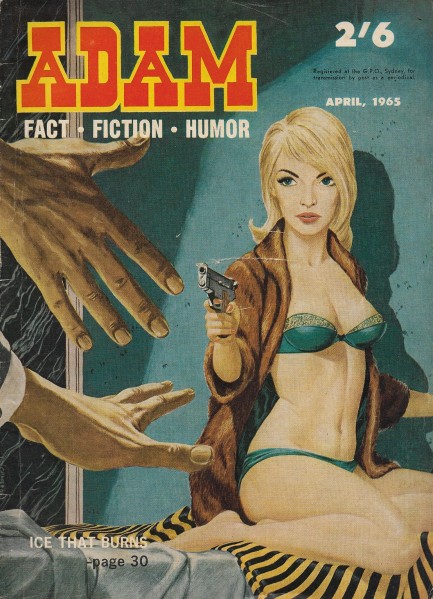
To say that Adam magazine is an interest of ours is an understatement, but we haven't shared an issue for eight months. That's been a result of our drawn out and complicated move, which we initiated last summer, thought we'd have finished by November, but actually just completed to the point of unpacking our scanner last month. Lesson: buying a house in the south of Spain takes three times longer than you anticipate. Rest assured, though, we're still collecting Adam, and today we're sharing our eighty-fourth issue, which takes us down to fifty-four more we need to upload.
This particular example, which was published this month in 1965, was tightly bound, so we have only a handful of scans because we didn't want to destroy the magazine by flattening it. Apparently there's such a thing as a triangle scanner meant for such situations, but we never heard of one until this week. Anyway, the cover here of a woman holding off a prospective assailant was painted to illustrate Walter S. Bratu's story, “Ice That Burns,” in which a random everyman runs afoul of a Nordic femme fatale, and gets snared in a blackmail and bribery plot. In a twist he eventually uses his car to bash hers off a cliff, but it didn't surprise us. In vintage men's magazines women who are sexually unavailable to the hero usually come to bad ends.
There's also a story from Carl Ruhen that wins the award for best title of the issue, if not all of 1965: “So Ineffably Sad.” It's about a man named Jacky Ryan who accidentally kills a woman and must somehow cover up the crime. This issue also has signed work from Jack Waugh (he'd give up on signatures as the years progressed), and of course a couple of pictorials, both with unidentified models. As we said, we can't show you everything because of our desire to preserve the magazine, but if we ever get a triangle scanner we'll add to this post. For now, we have a mere fifteen panels below.
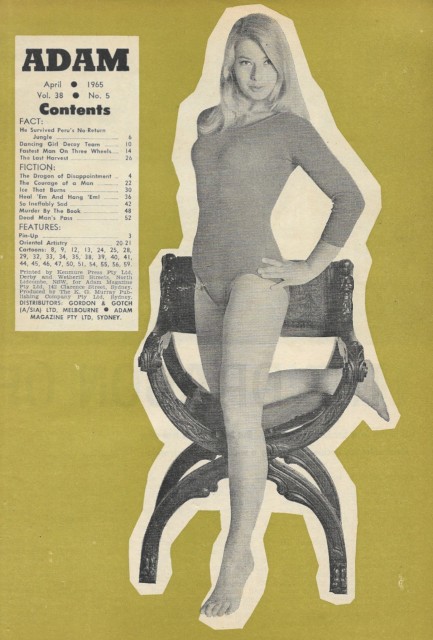 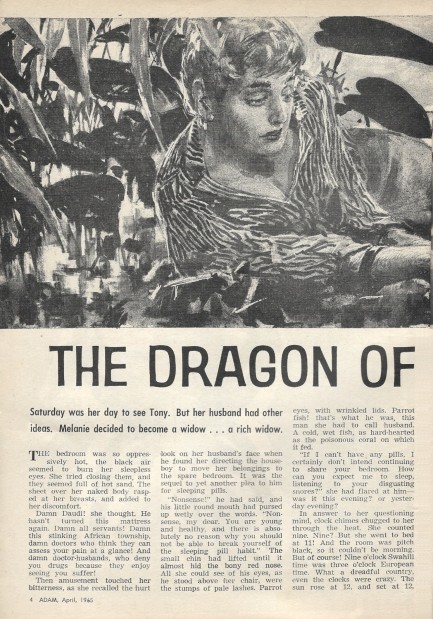 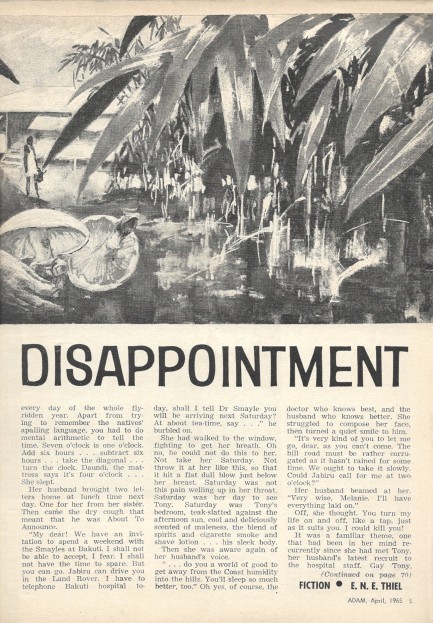  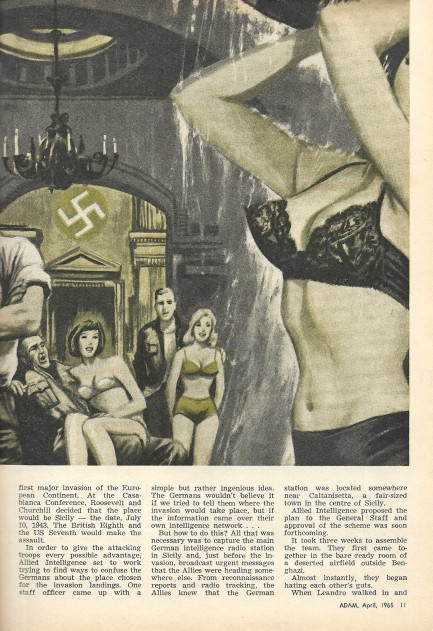 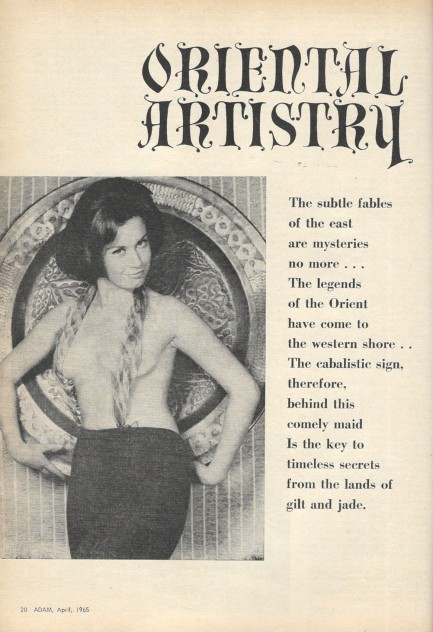  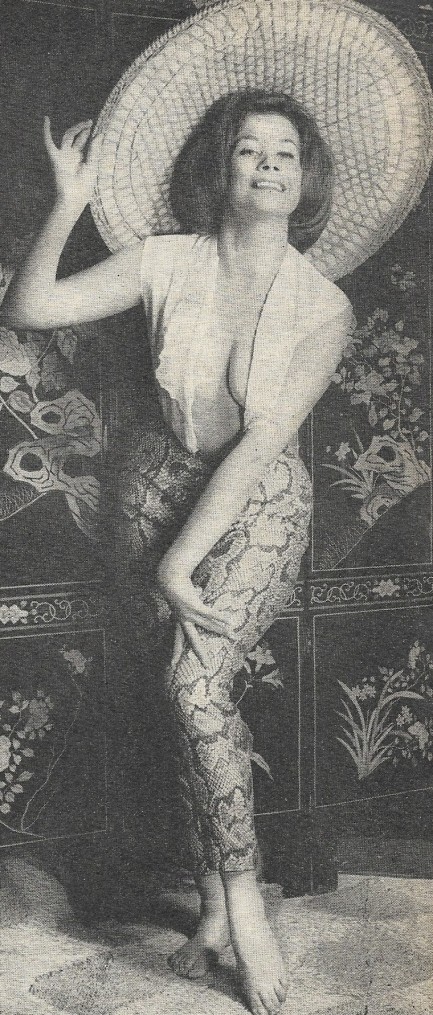 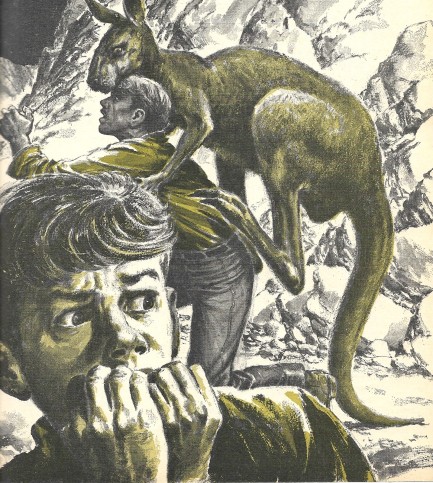 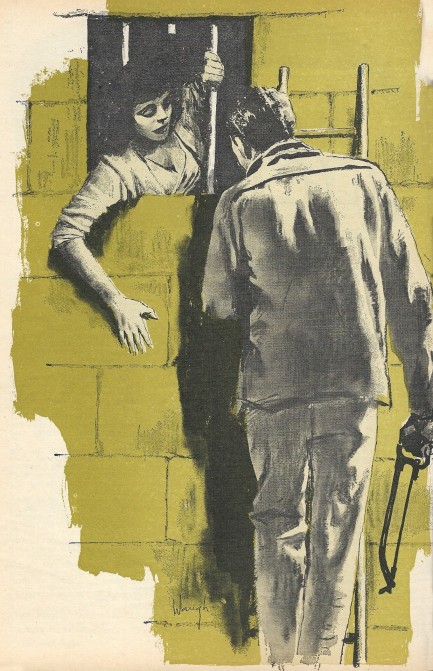 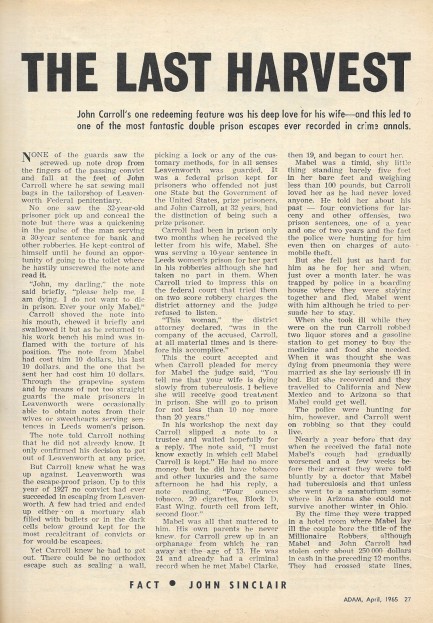 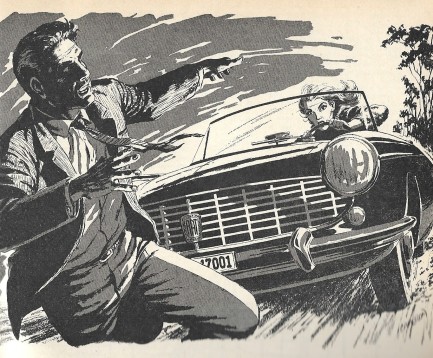 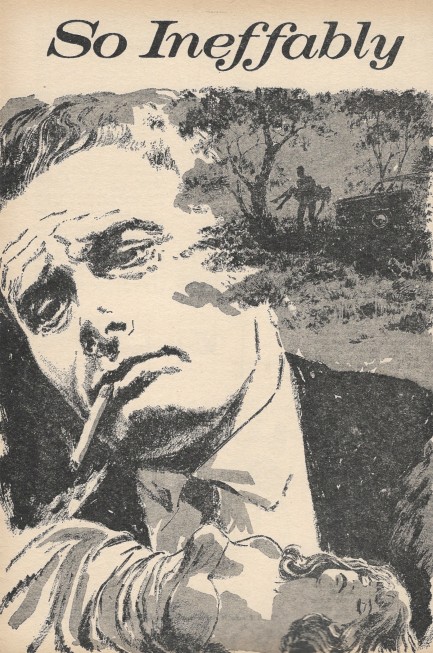 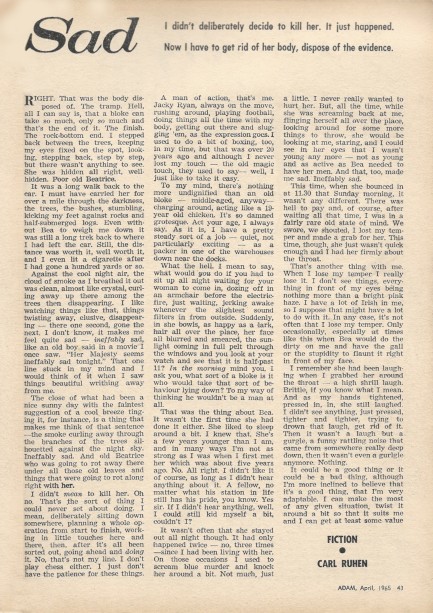 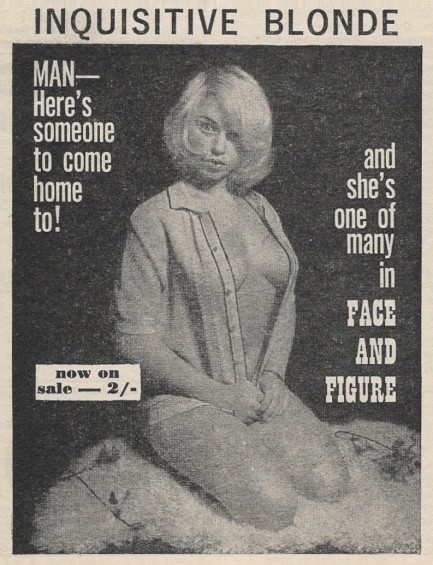
 I see a tiny island! If we make it there we can recite captions from classic castaway cartoons until we're rescued! 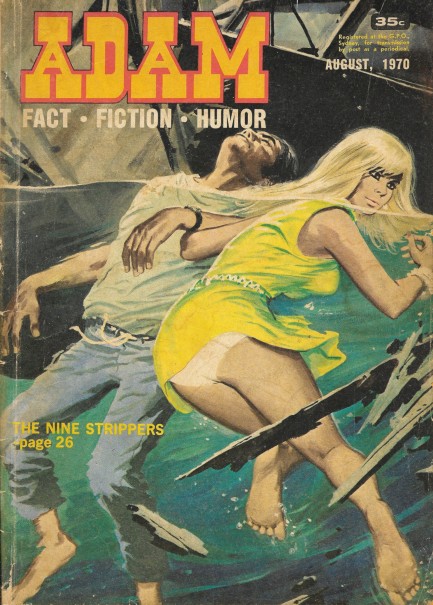
We have another issue of Adam today, with a fun cover illustrating Ron Rawcliffe's story, “The Nine Strippers.” Obviously, with a title like that we had to read it, and it deals with a charter boat captain hired to take nine exotic entertainers upriver into the wilderness under mysterious circumstances, and it turns out they've been hired by an organized crime cabal. When the gathering is raided by federal police the captain must escape intact with bullets flying, strippers fleeing, and mafiosi trying to hijack his boat. Also in this issue of Adam you get fiction by Leonard Calhoun and John P. Gilders, plus a bit of boxing and a lot of models, including German born Israeli actress Helena Ronée just below, and French actress Catherine Rouvel in the feature "She Wins Them All." And circling back to the cover and its two potential castaways, look forward to this: we have another set of castaway cartoons coming up.
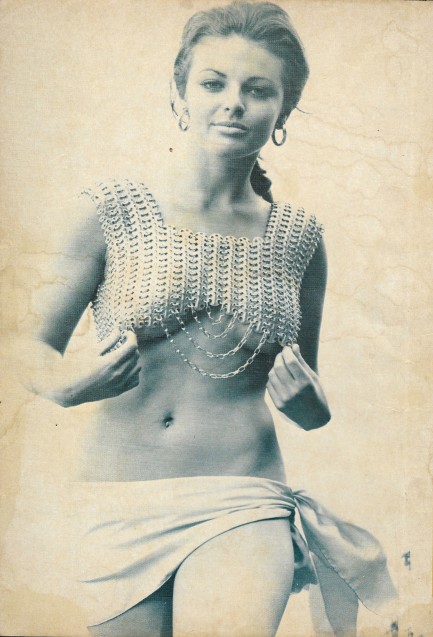 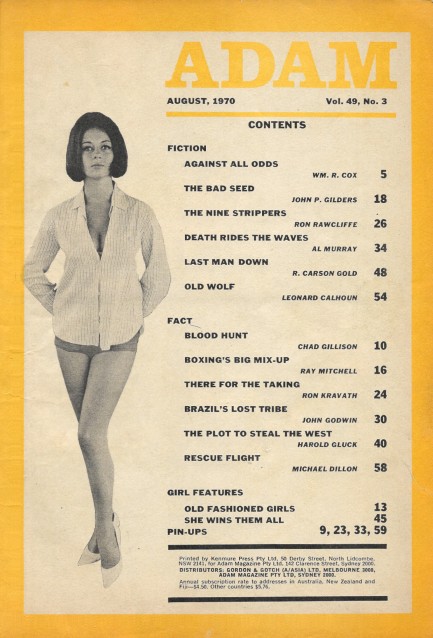 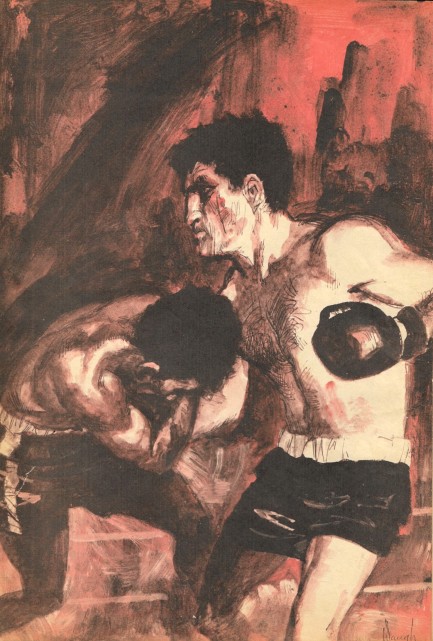 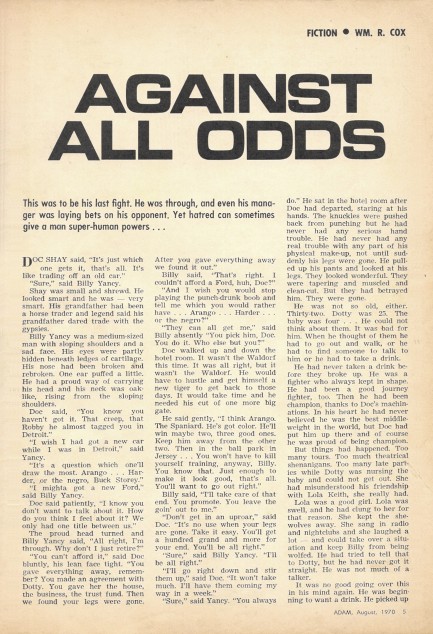  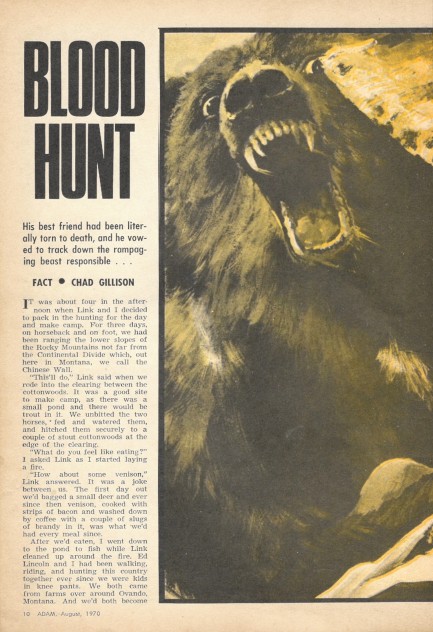 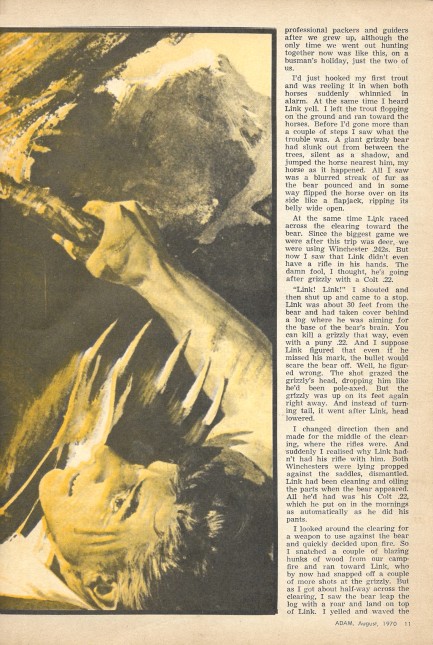 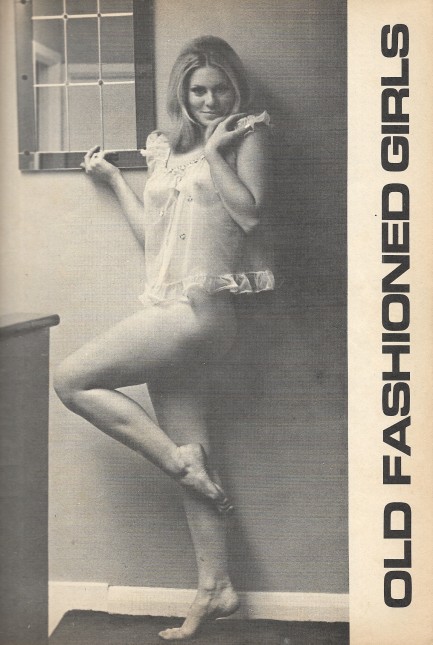 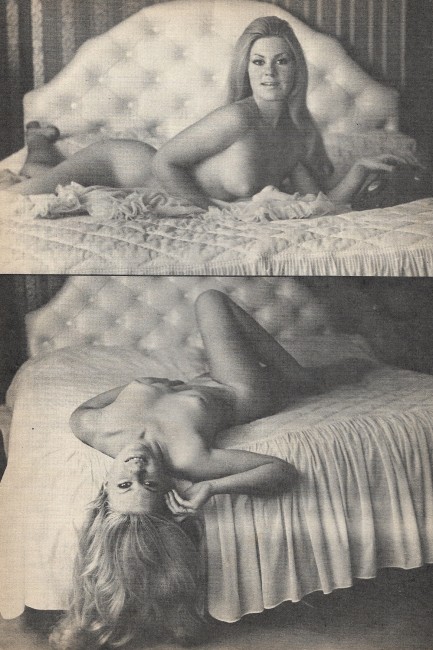 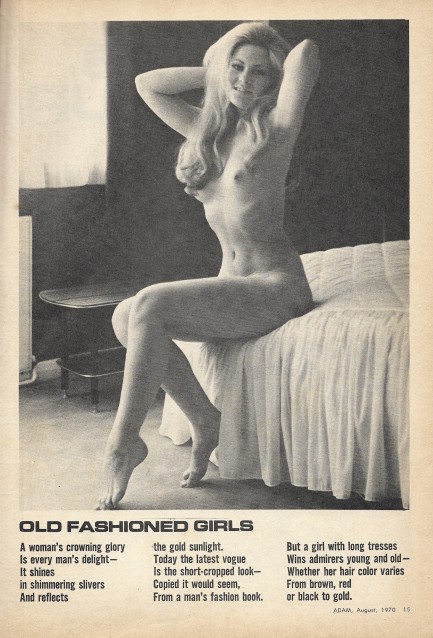 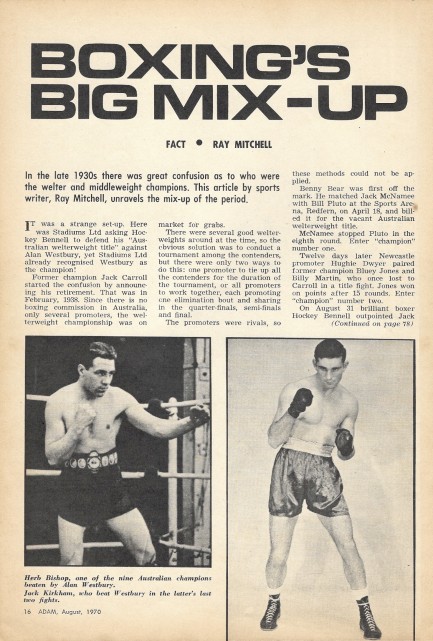 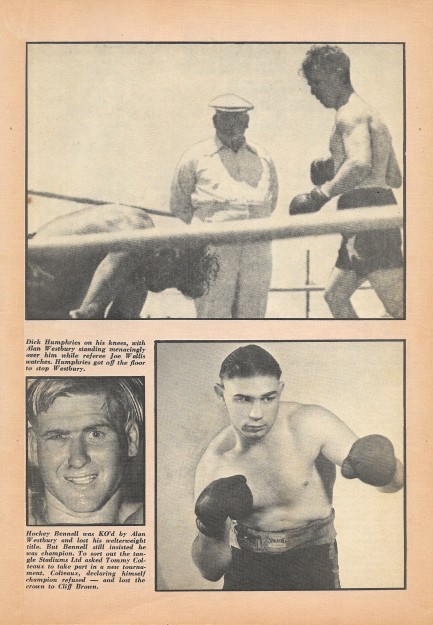 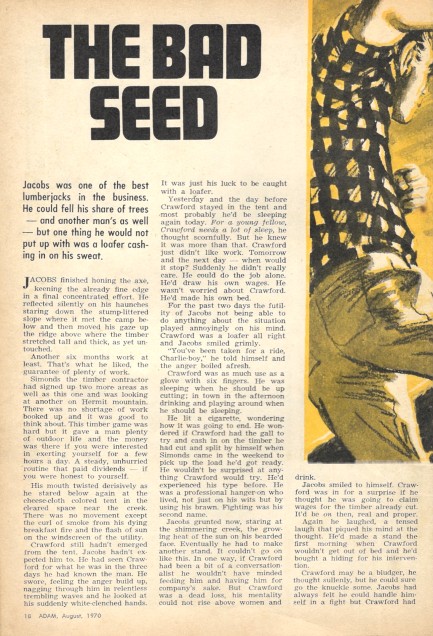 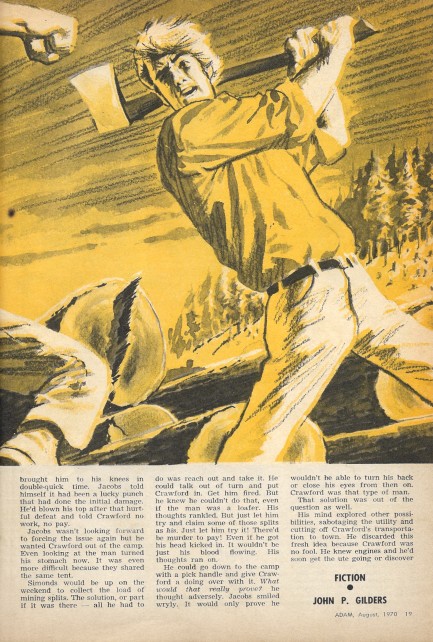 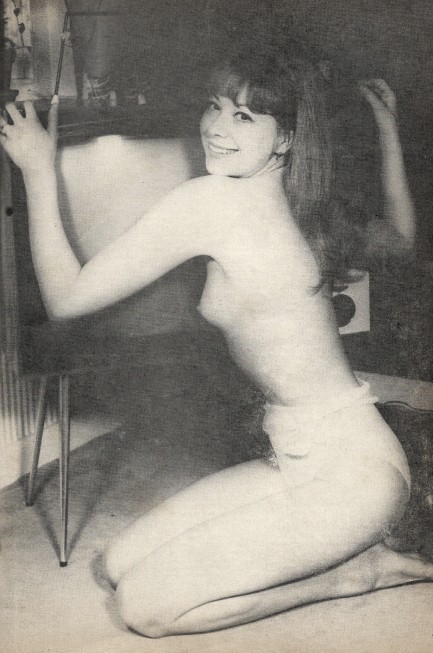 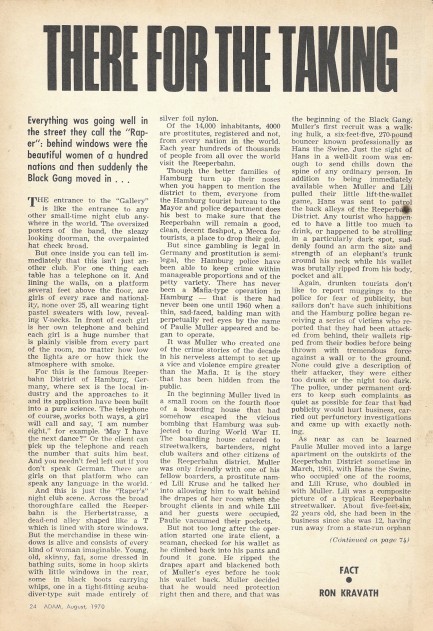 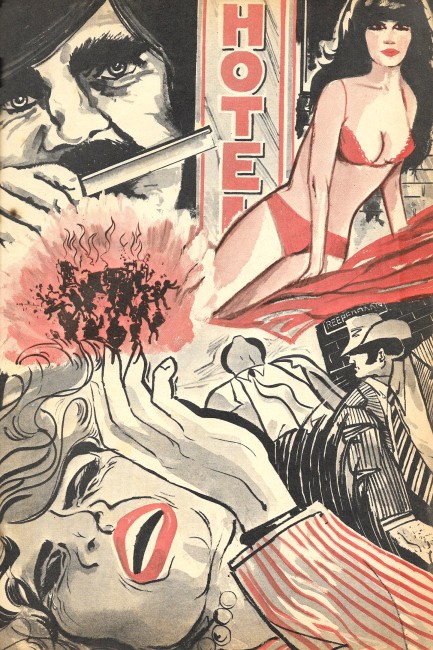  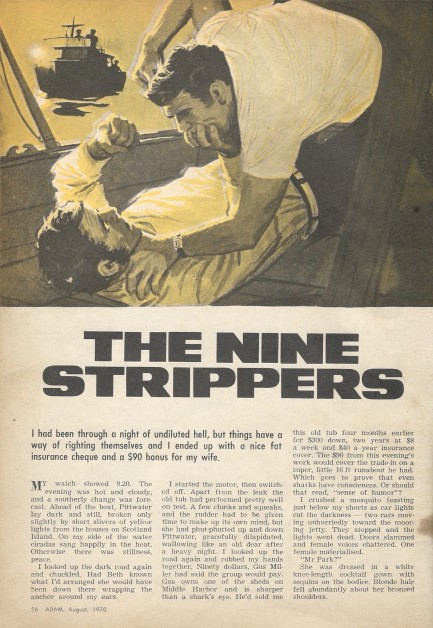 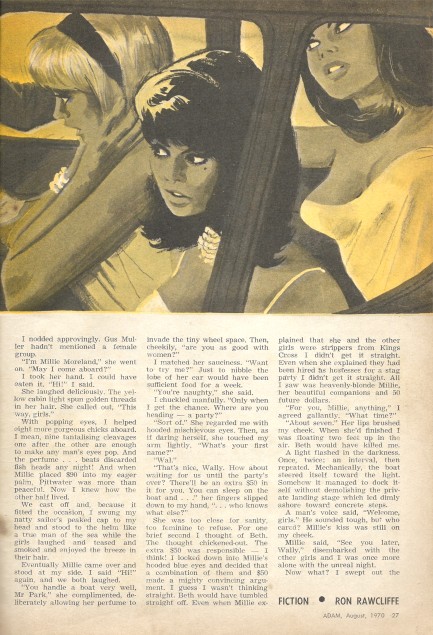  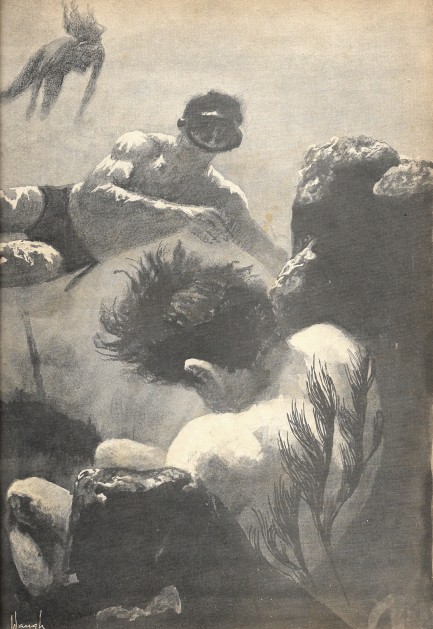     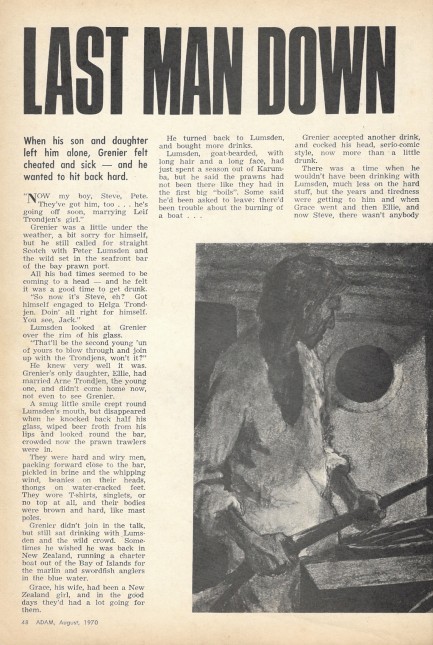 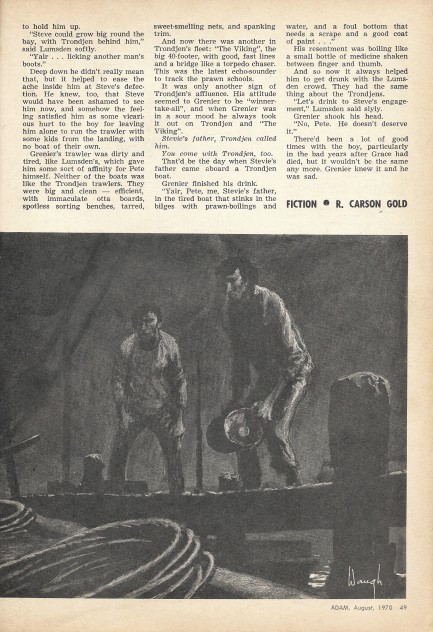 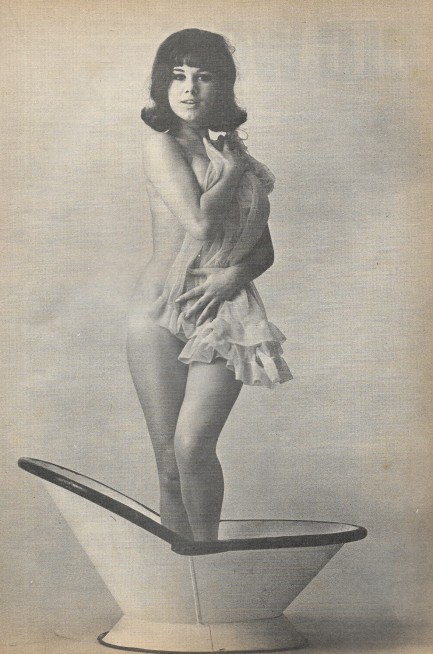 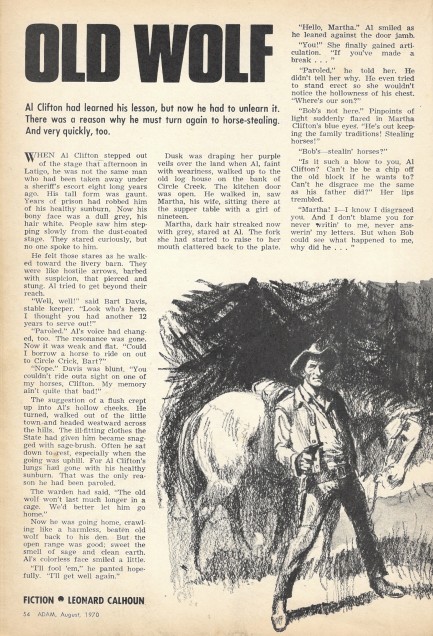 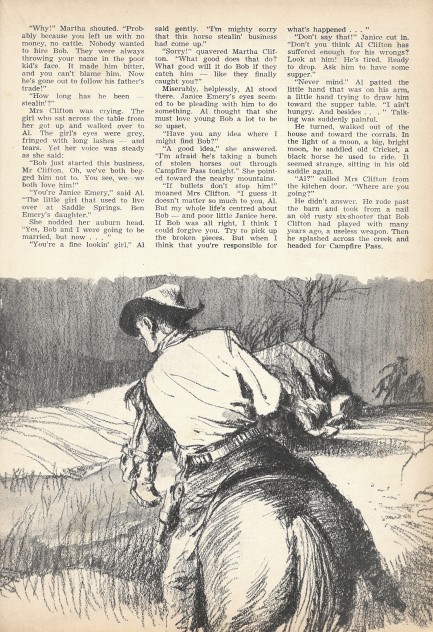  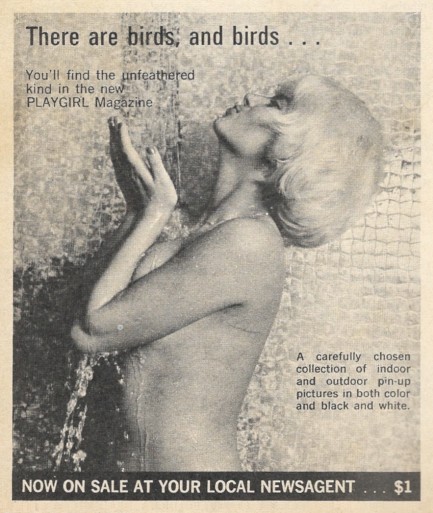 
 To the inexperienced eye she looks unarmed, but her moral outrage and certainty that men are always wrong will prevail. 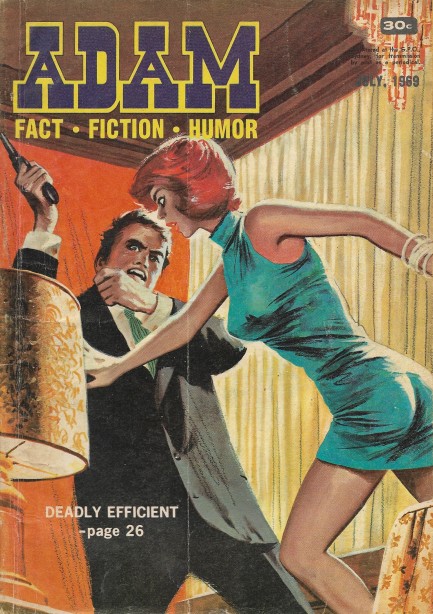
This cover of Adam magazine dates from July 1969, and as always there's conflict depicted. The art illustrates Ted Schurmann's story, “Deadly Efficient,” which is about a disgruntled secretary who helps rob her employer. What's she disgruntled about? Well, it's a story from a 1969 men's magazine, so what do you think the problem would be? That's right—her boss doesn't love her. But the very hour after the robbery, the boss calls up the secretary (not knowing yet that his office has been ransacked) and admits he has feelings for her, which leaves her to try to undo the theft before it's discovered. That effort backfires in the expected ways, leaving the corpse of her accomplice and a lot of questions behind. It's a decent story, so we weren't surprised Schurmann also published a couple of novels. But it looks as if Adam may have given him his first shot. Its role as a platform for new writers is yet another reason it was one of the best men's magazine around. We have twenty-five scans below, including a shot of British model/actress Eve Eden in panel twelve.
 The story's on the verge of ending badly for all of them. 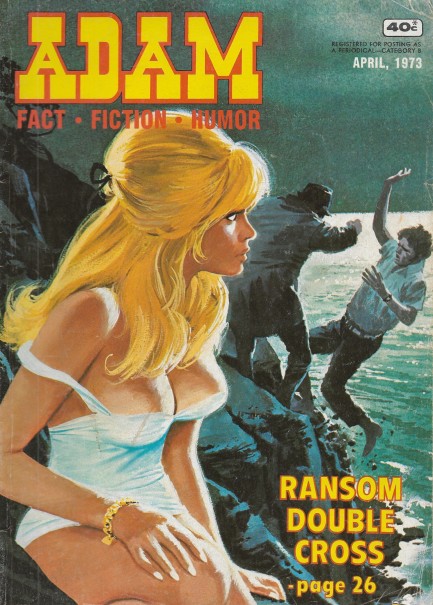  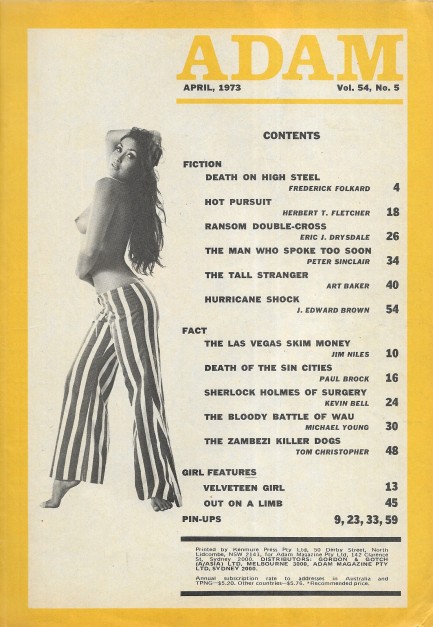 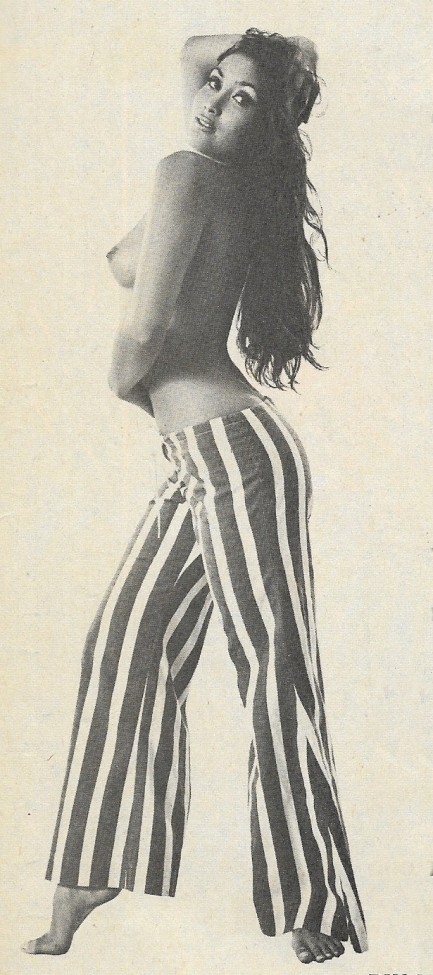 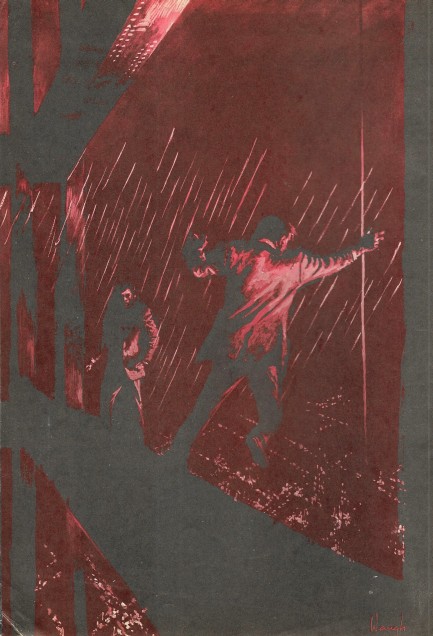 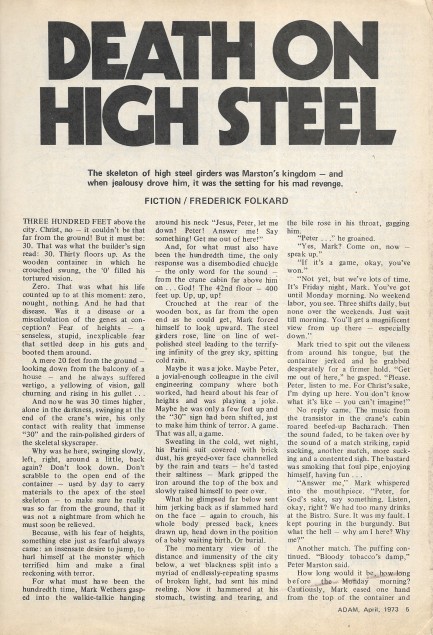  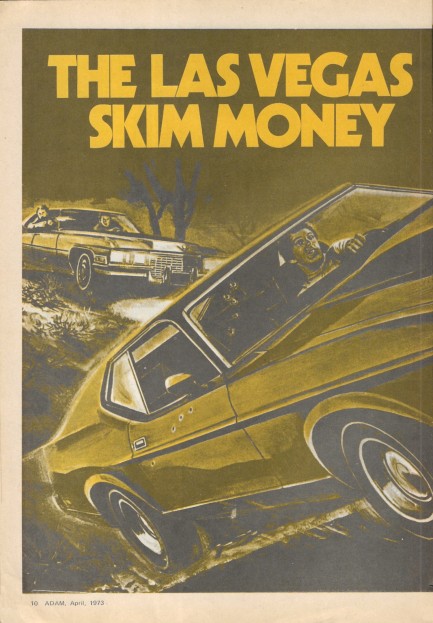 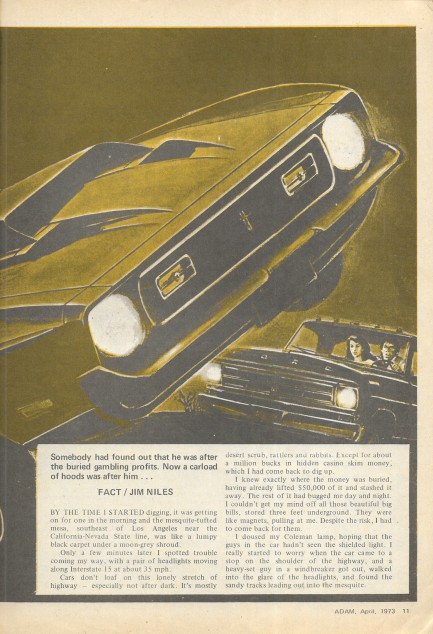 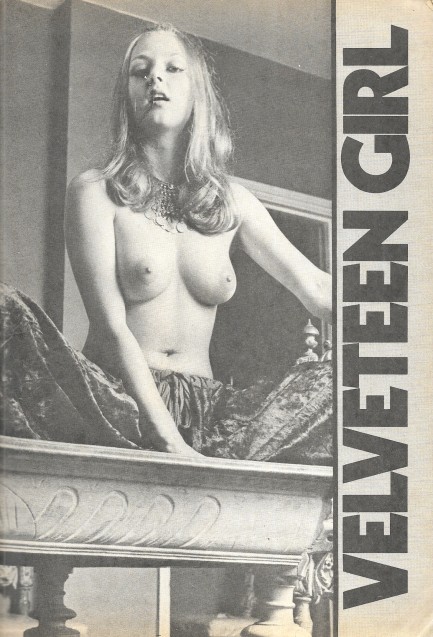 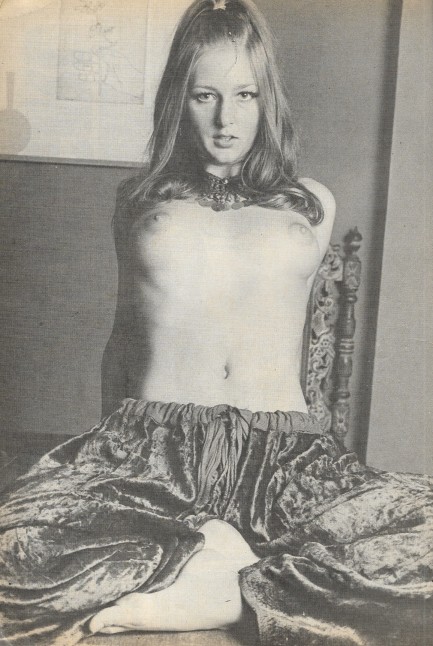  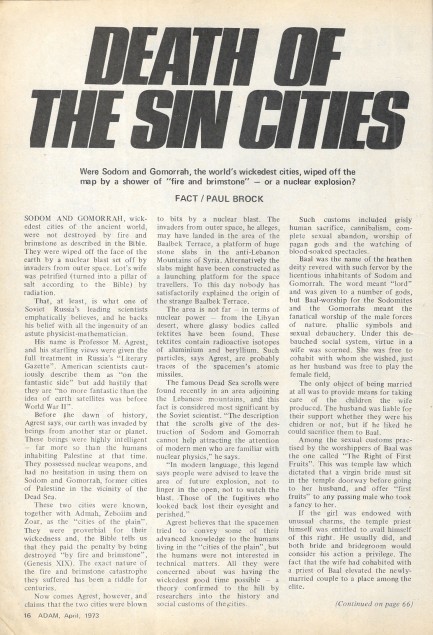 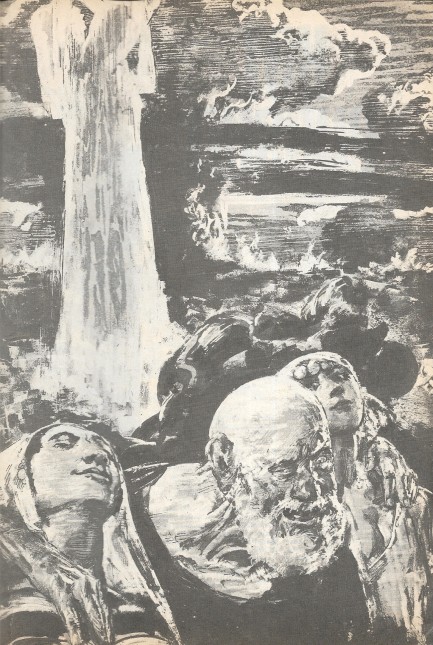 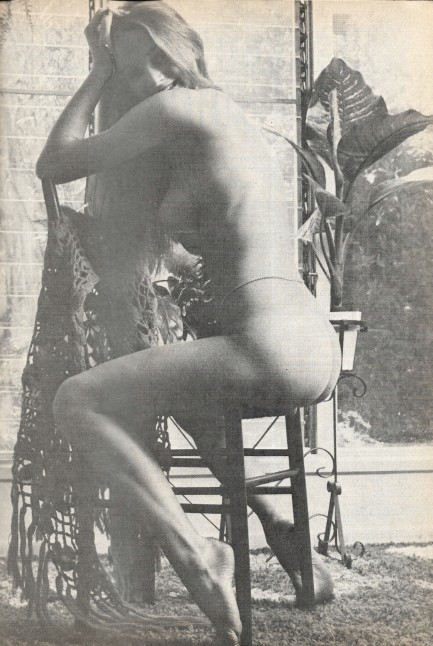 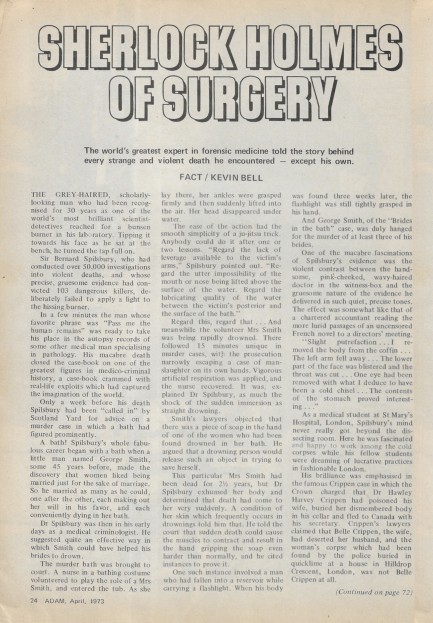 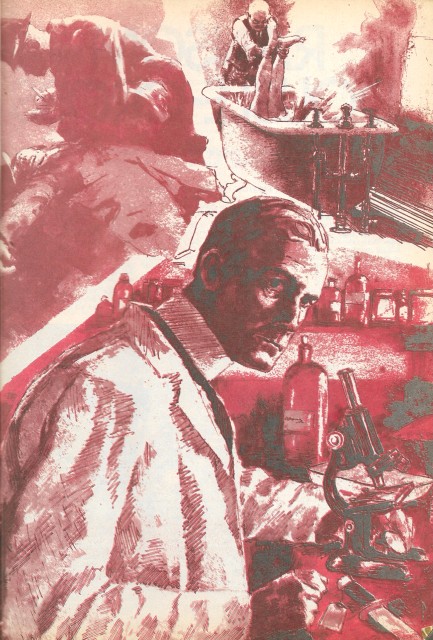 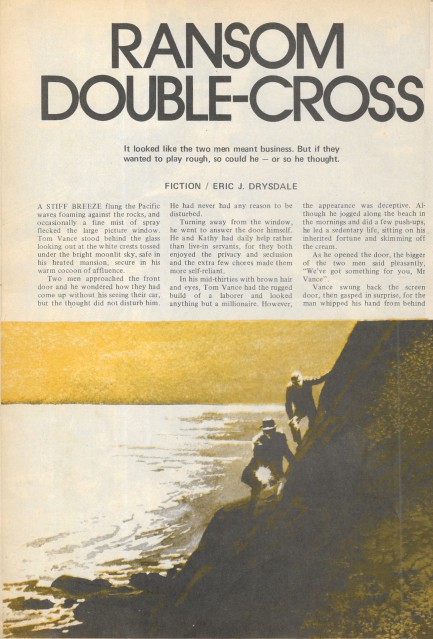 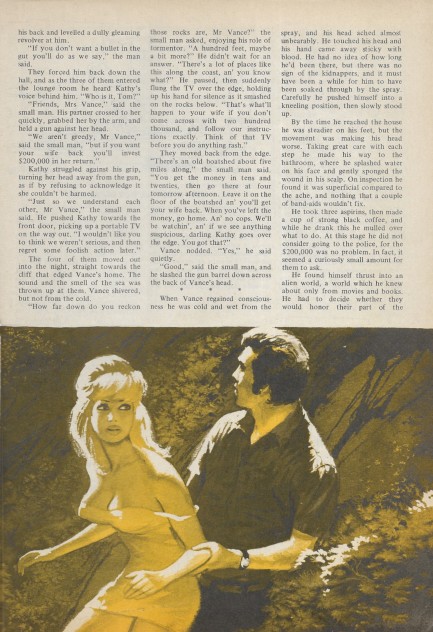 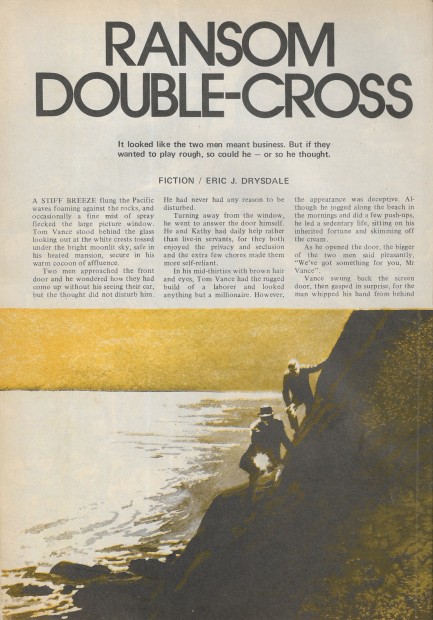  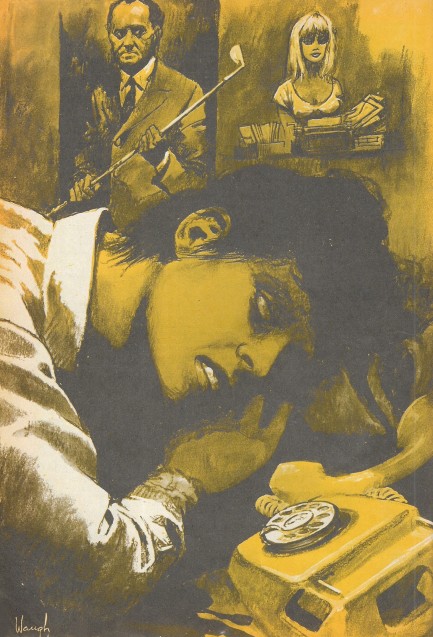 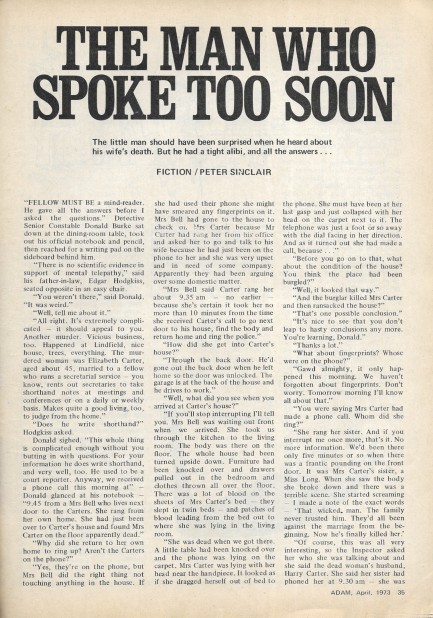 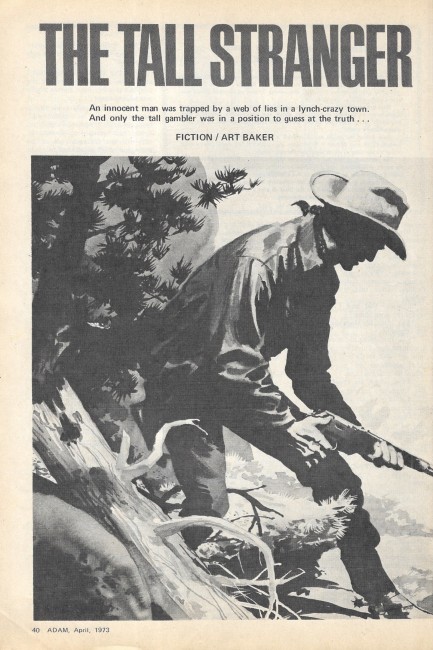   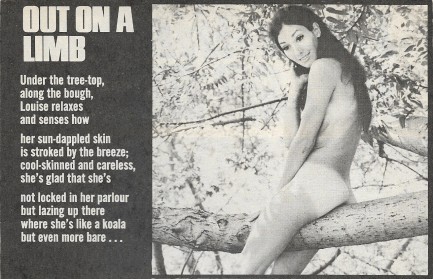 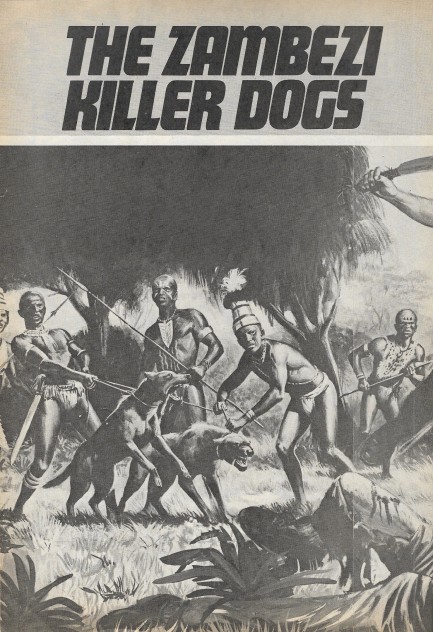 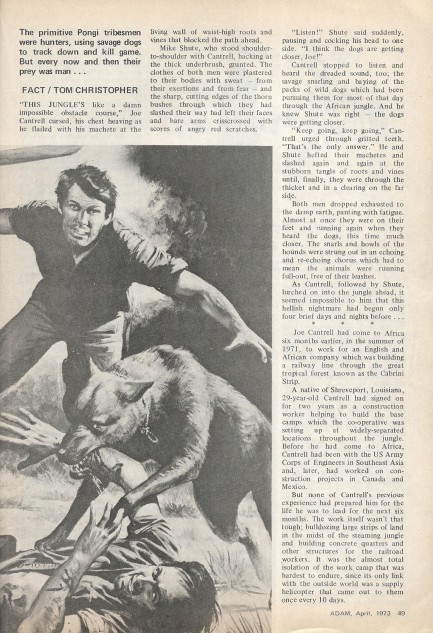 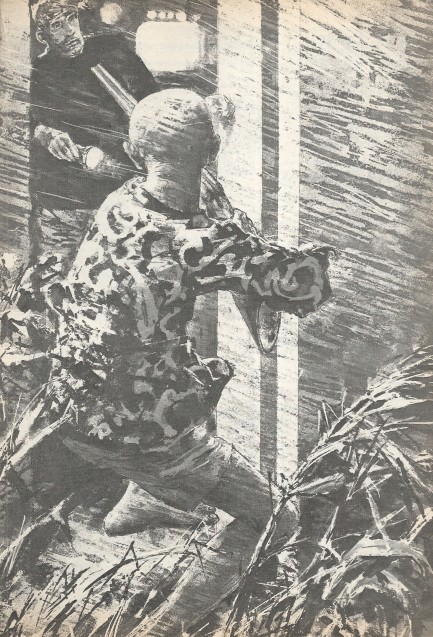  
The above issue of Adam once again features two men about to fall to their deaths while fighting. The magazine used this idea often, including on our last example. The art, which is probably by Jack Waugh, illustrates Eric. J. Drysdale's tale, “Ransom Double-Cross,” about a rich man whose wife is kidnapped for $200,000 ransom. He later learns that she's in on the scheme and wants to have him murdered so she can inherit everything. But you can't keep a good man down. His wife goes over a cliff, as do her two accomplices. The inside front cover of this issue is graced by Italian actress and occasional space femme Ornella Muti, while the rear cover model, just above, is familiar, but unidentified for now. We'll have more from Adam later.
 Some men go head over heels for a woman. 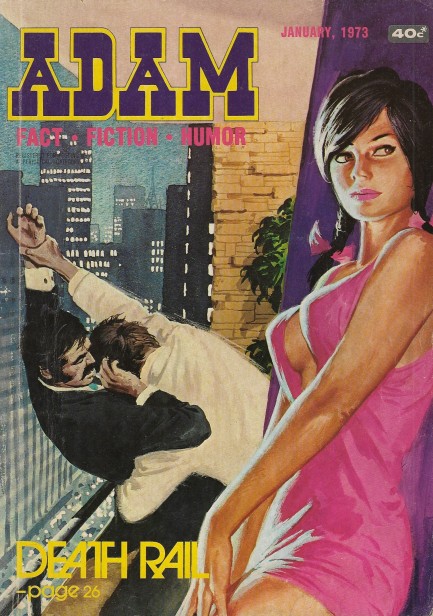
We have another of issue of Adam magazine for you to feast your eyes upon. This one was published in January 1973, and the cover illustrates the story, “Death Rail,” in which author Jack Ritchie asks the eternal philosophical question, “What do men think about when they are falling?” The answer is probably: how to land on the other guy. And what does a woman think about? In the story she congratulates herself for having inherited everything that belongs to her falling husband, and all just by making him erroneously believe she was screwing his business partner, and luring the two into a balcony fight. And the twist, unrevealed until the last sentence, is that it was all a misdirection play. She actually had been cheating, but with the chauffeur, not the business partner. Pretty good work from Ritchie, and another excellent effort from Adam. 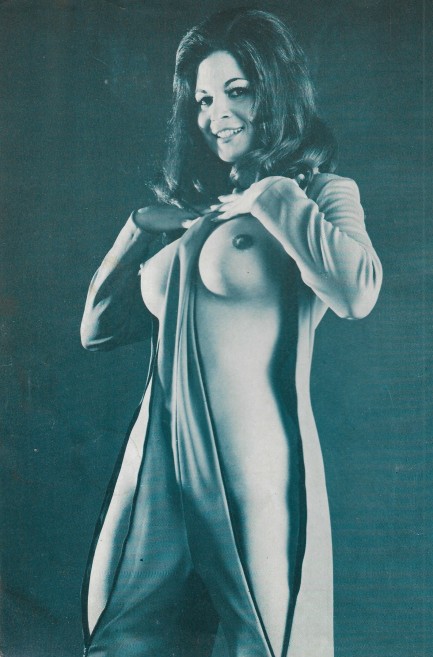 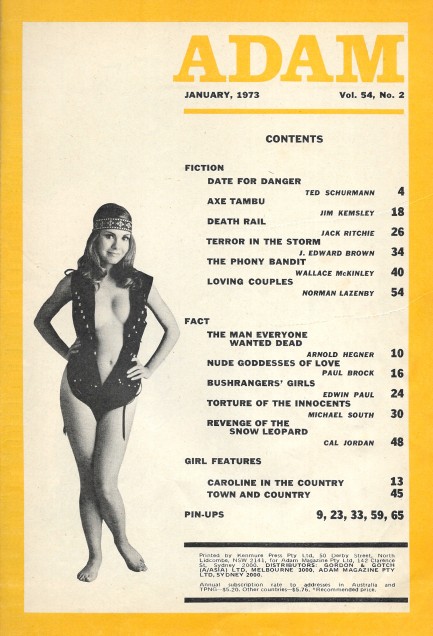  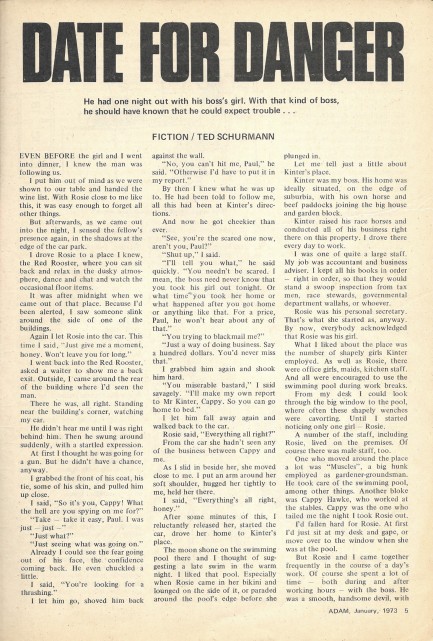  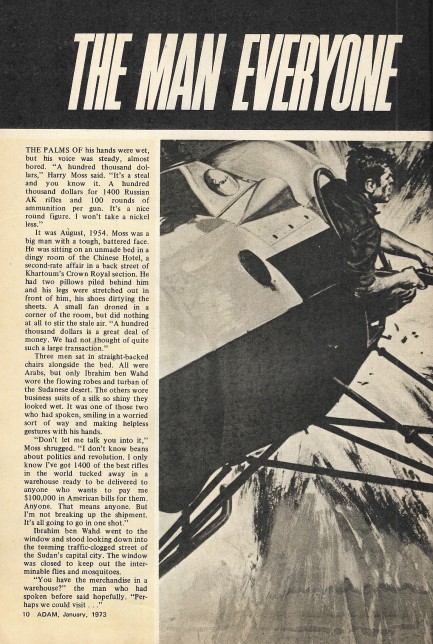  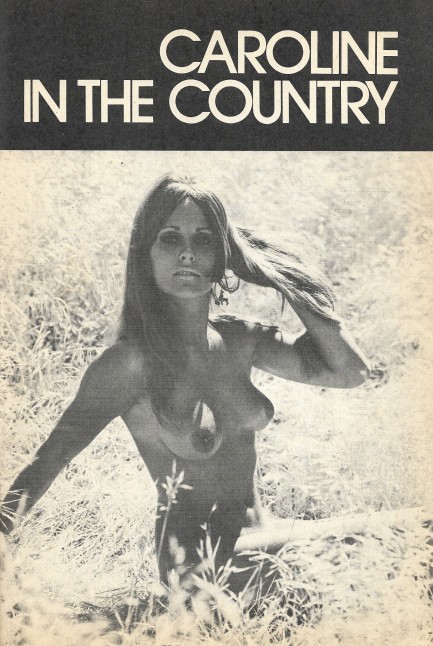    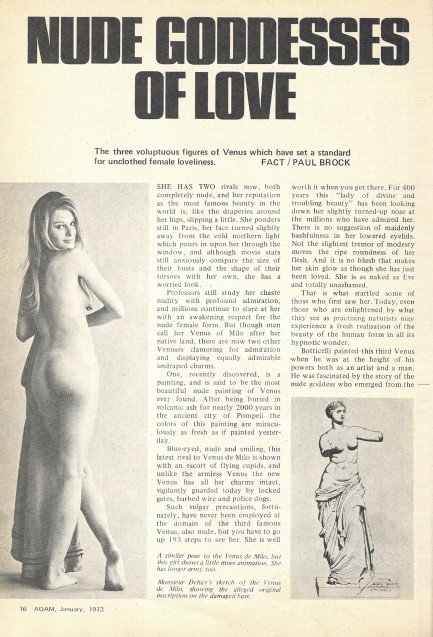 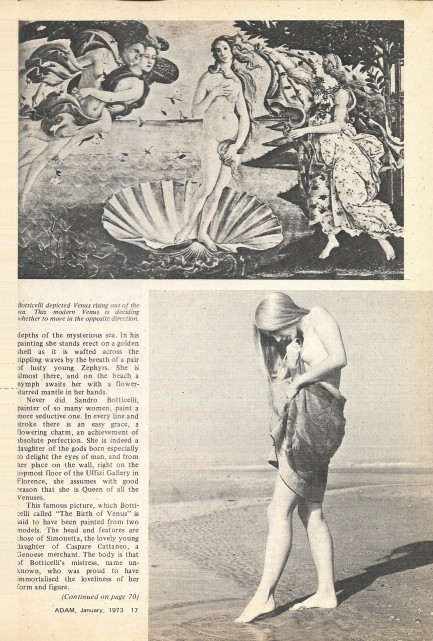  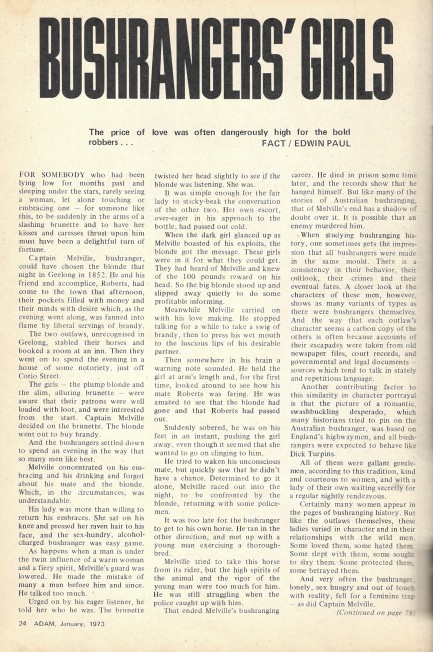 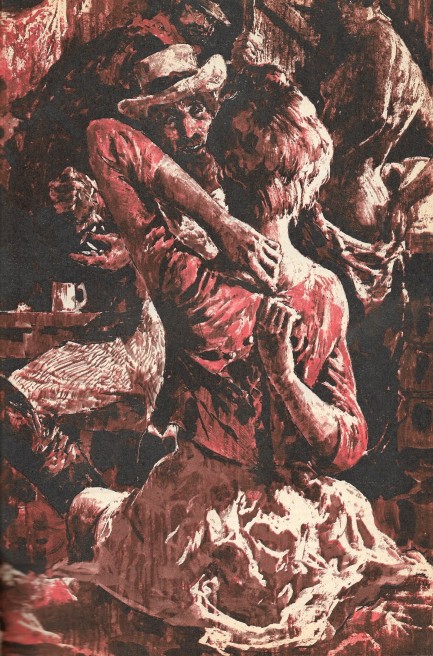 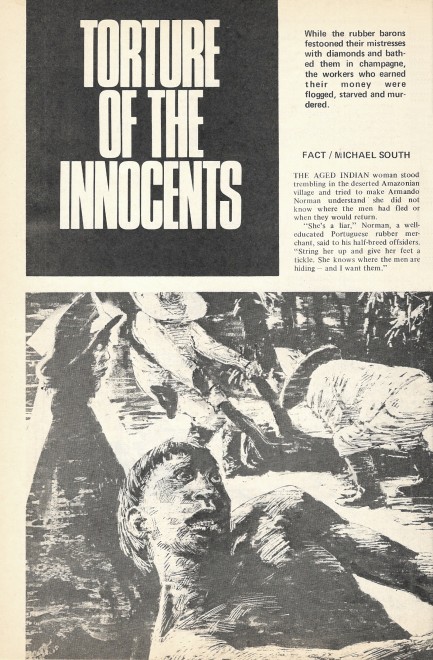 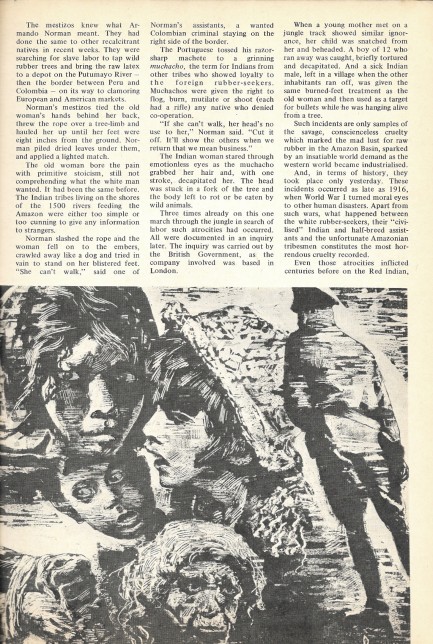  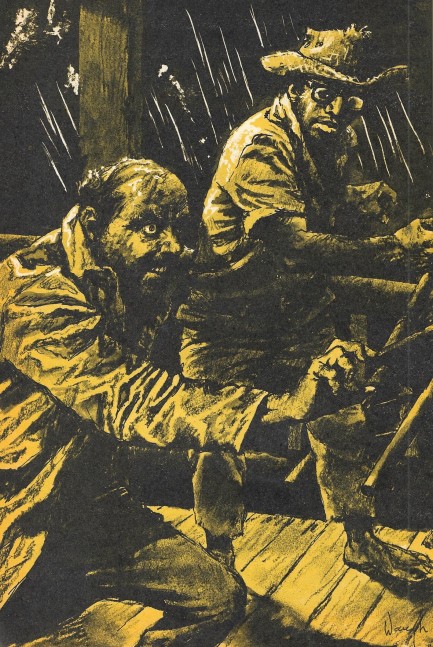 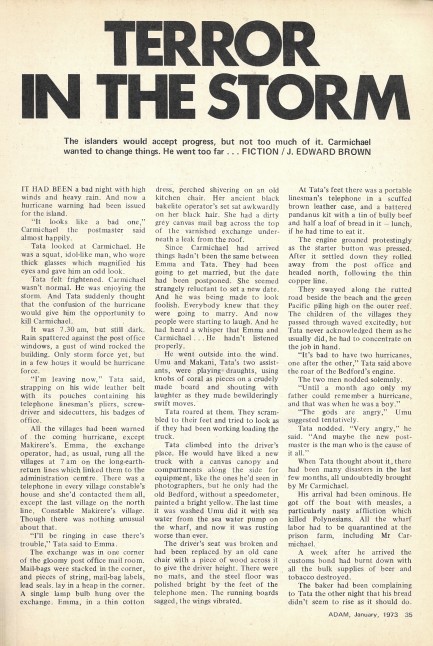 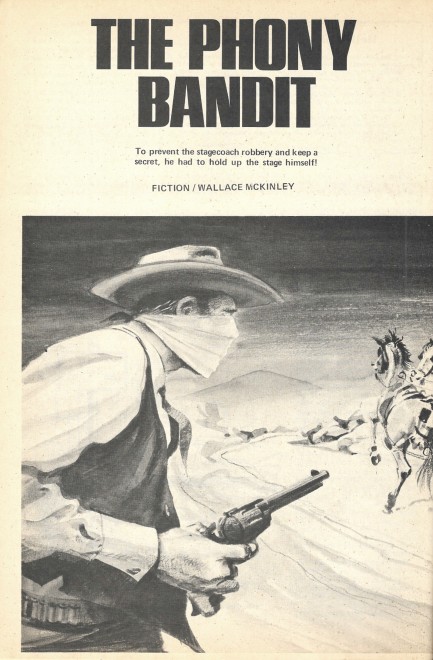 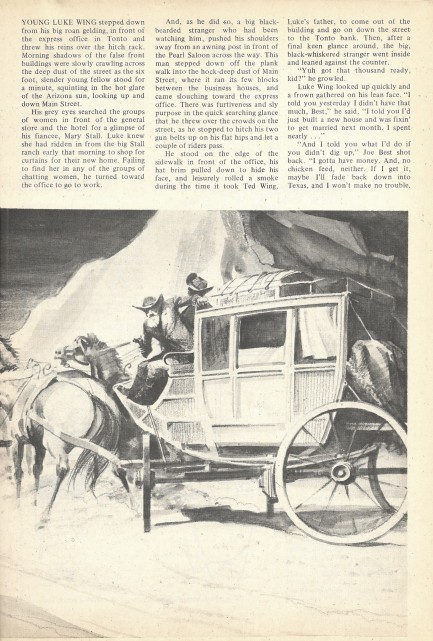 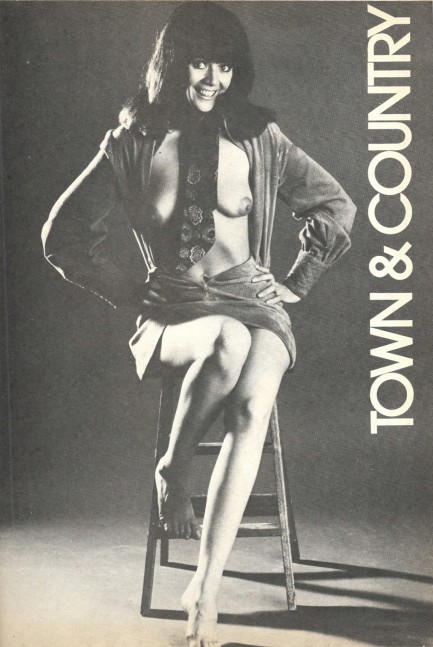 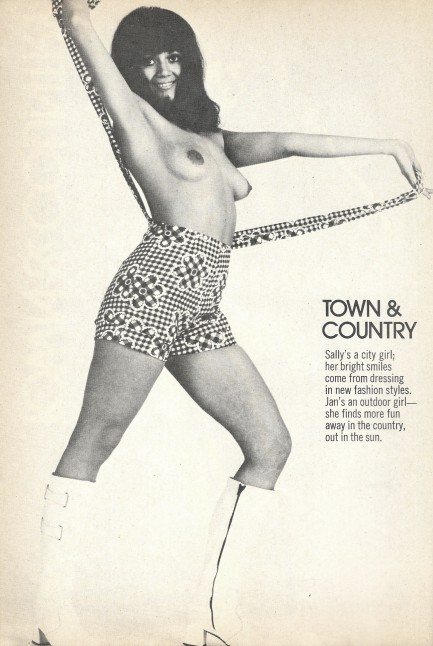 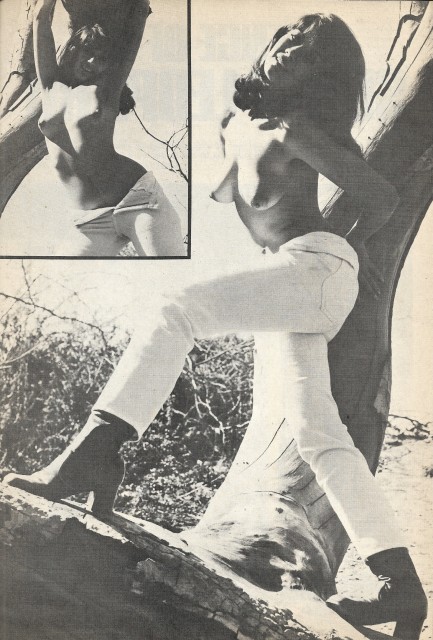 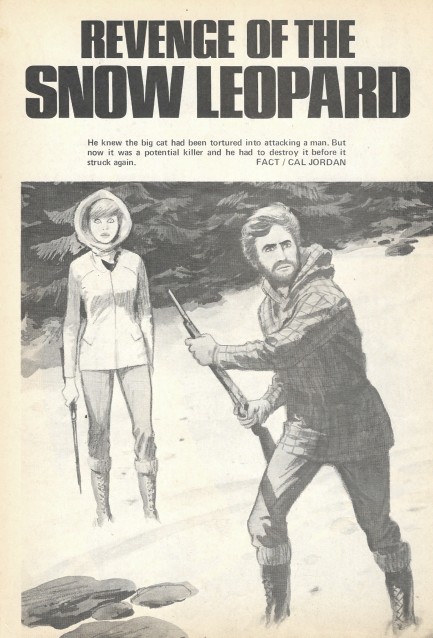 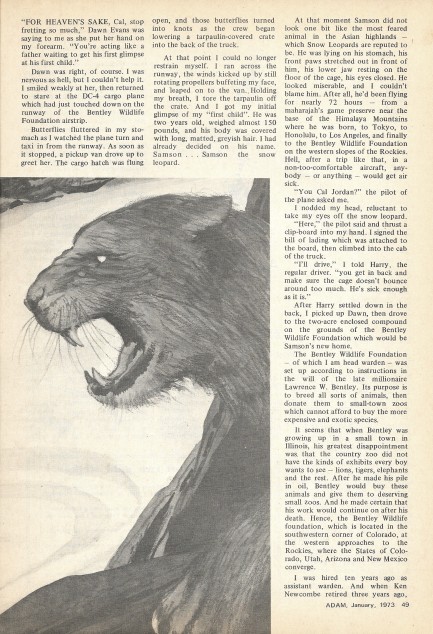 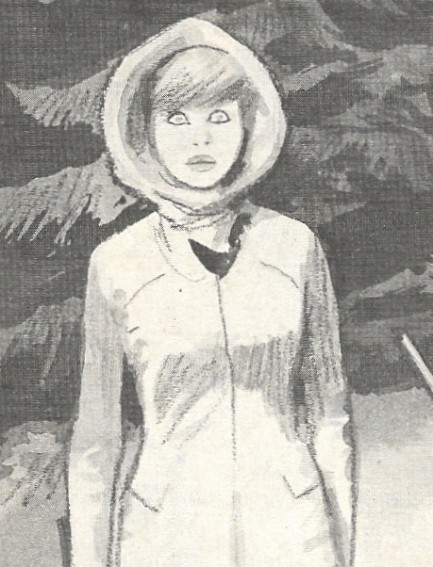 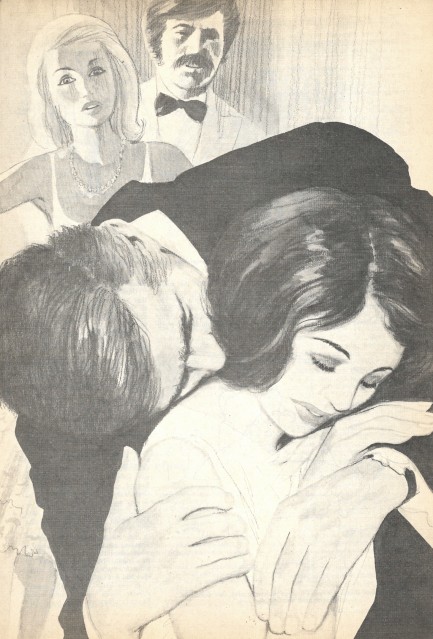   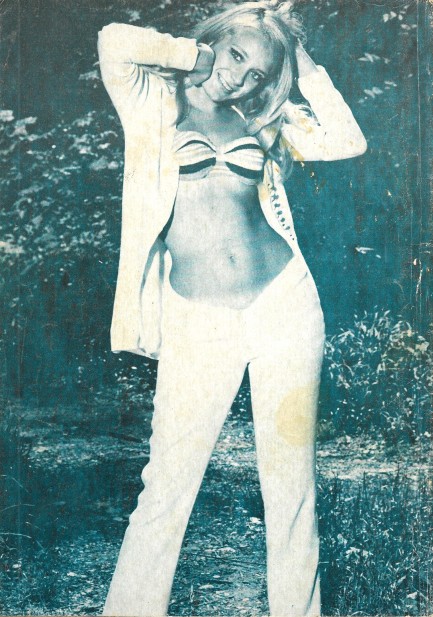
 Don't worry! I'm going to get the three of you out of there! 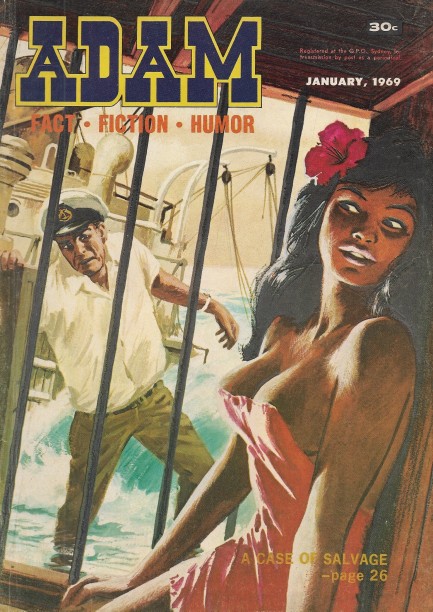
Our girlfriends—affectionately PI-1 and PI-2—rolled their eyes at this one, and why wouldn't they? We did too, but we work with what we're given, and we certainly couldn't ignore the fact that this January 1969 Adam magazine features a cover of a woman whose gravity defying breasts are directly in the center of the art. Men's magazines, those concoctions of macho fantasy set to print, are inherently sexist, but we are mere documentarians of mid-century art, literature, and film—and crime, and weirdness, and sex—in the various forms they take. This one is a particularly eye-catching example.
While literary magazines published prestige fiction, men's mags like Adam carried on the pulp tradition, giving authors without highbrow leanings opportunities to expose their work to wide audiences. Without the efforts of such publications, modern literature might look very different. Stephen King, for example, published many of his early stories in Gallery, a middle-tier smut monthly nobody would have mistaken for Playboy. Speaking of which, Playboy published early works from Ian Fleming, Ursula K. Le Guin, and even serialized the entirety of Ray Bradbury's Fahrenheit 451 in 1954, a year after its initial publication landed with a thud.
As far as we know Adam didn't produce any major writers except James Lee, aka Jim Aitchison, whose Mr. Midnight books were recently made into a series now streaming on Netflix. But failing to graduate lots of future bestselling authors doesn't change what Adam was—a publication that aimed for mass male appeal by merging all the elements of what was once known as pulp. Those elements included mystery, crime, war, exotic adventure, risqué humor, and a dose of relatively tame sexual content. We have all that and more below in thirty-plus scans, and something like seventy-eight issues of Adam embedded in our website.
 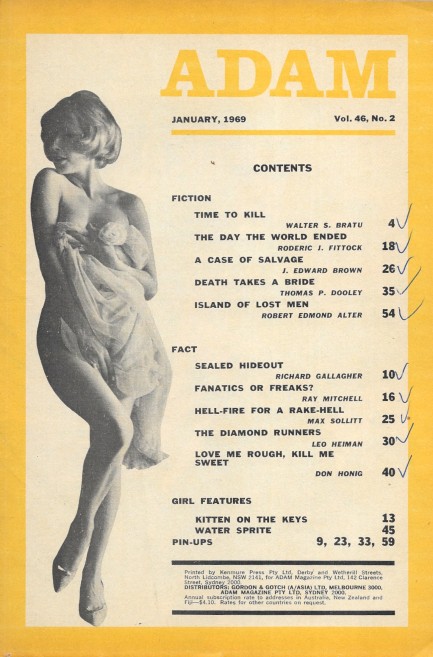 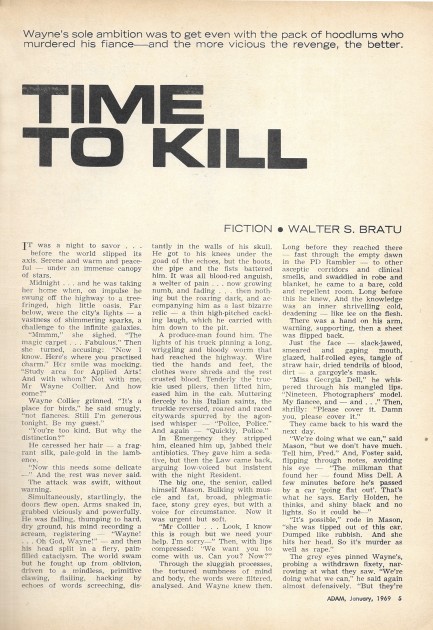 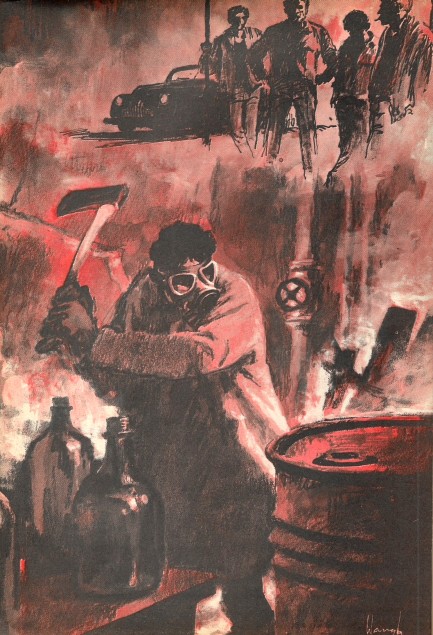 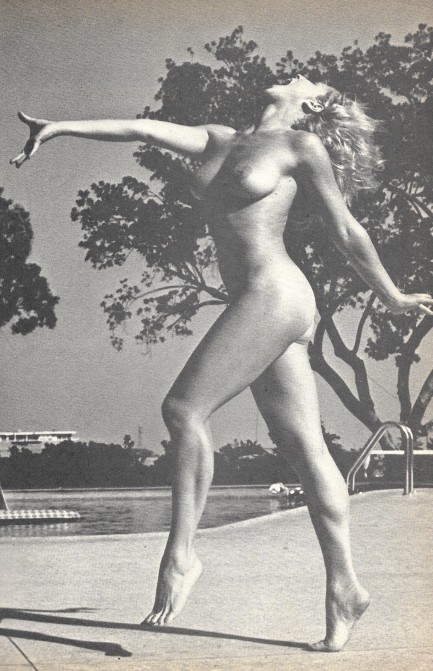 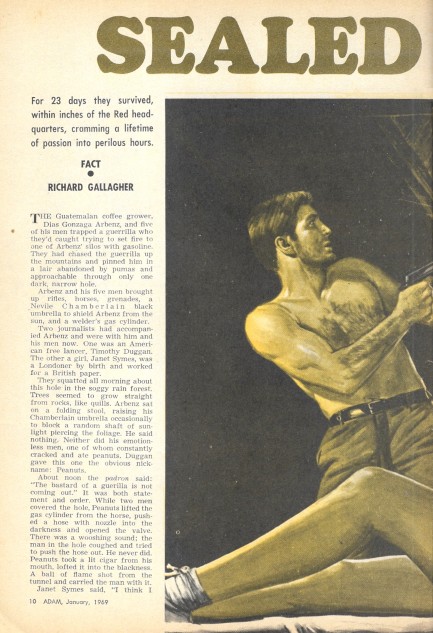 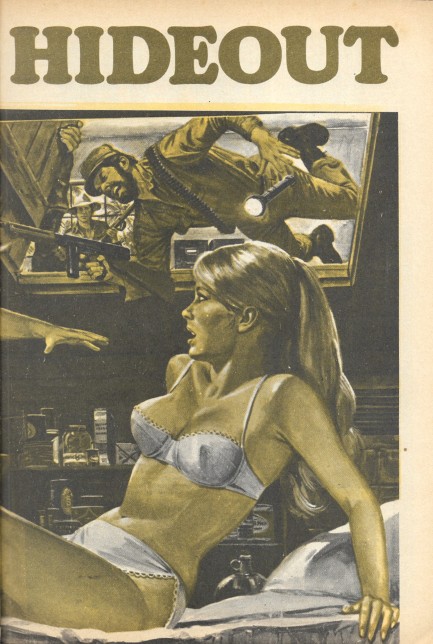    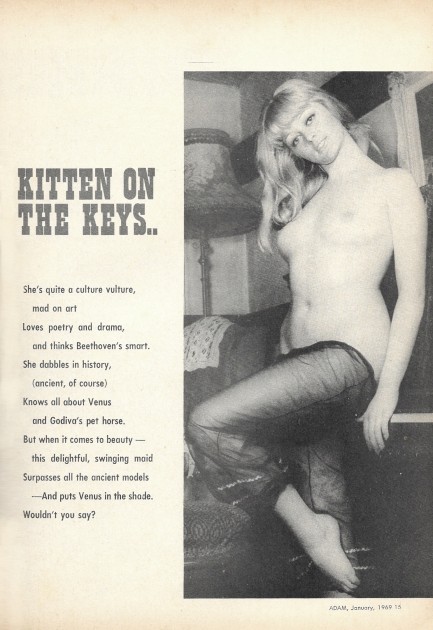 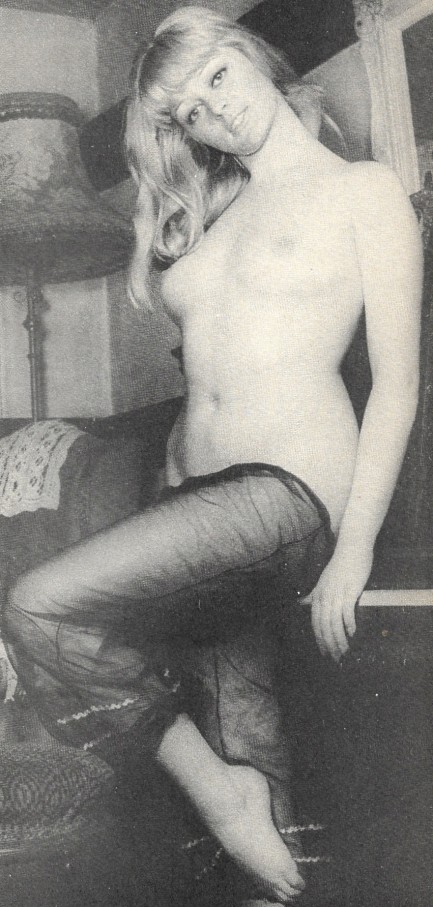 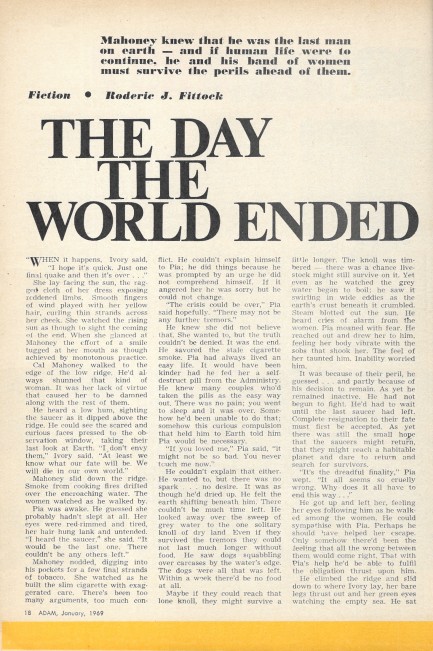 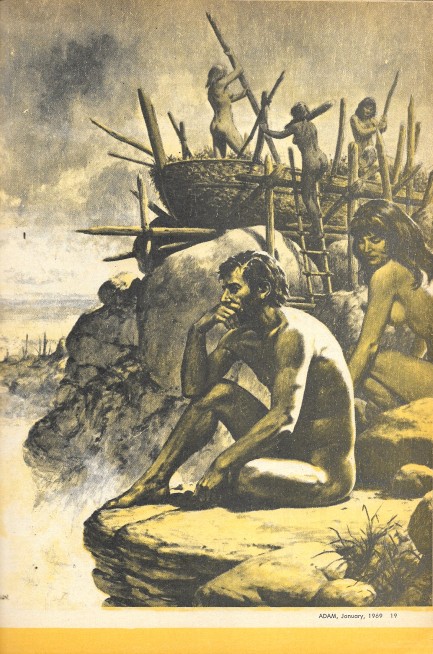  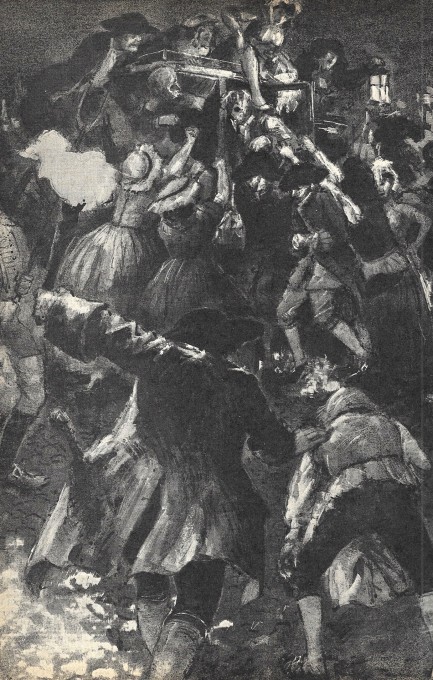 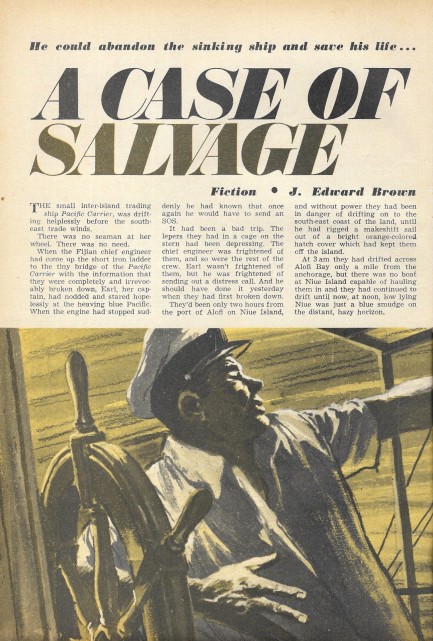 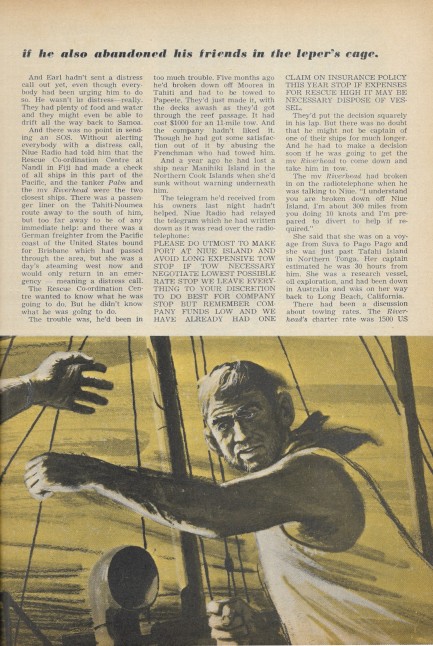 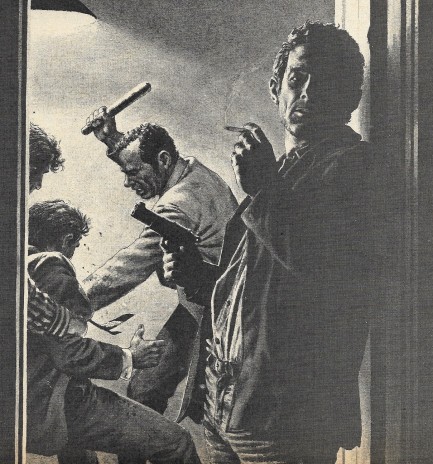  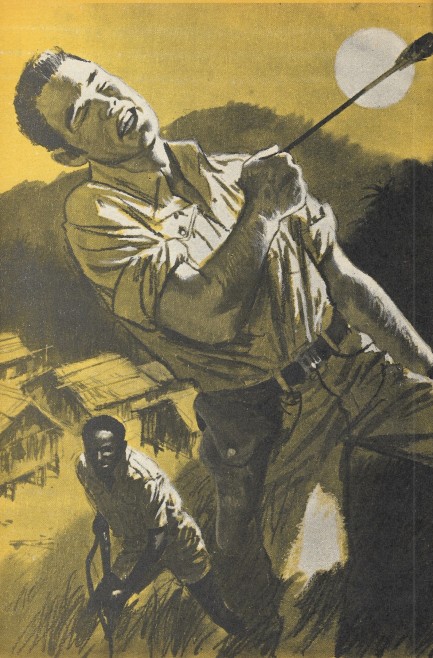 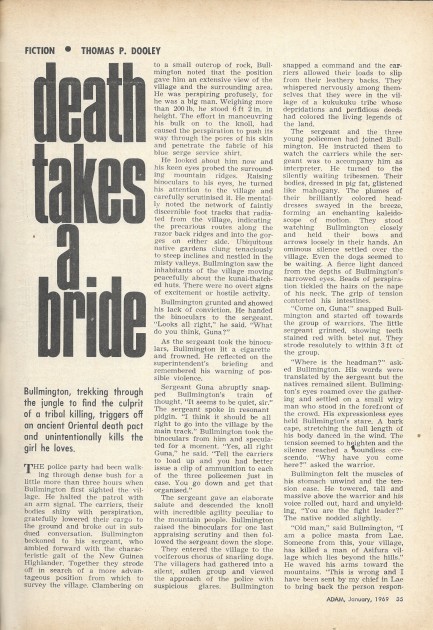 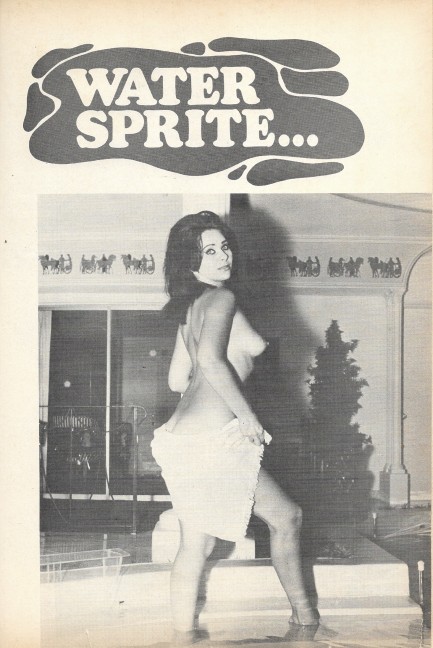 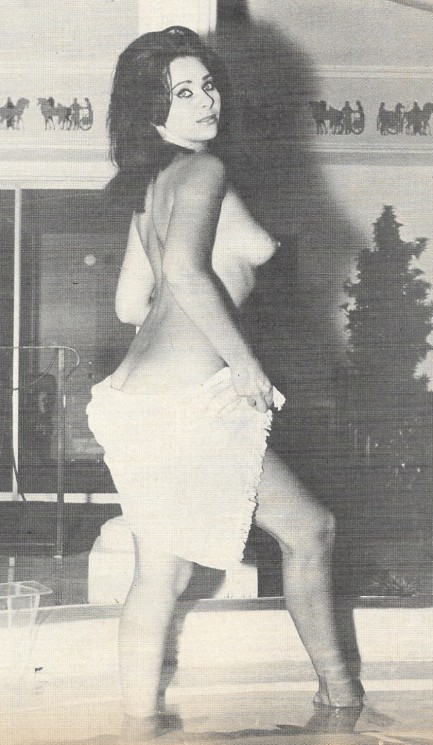 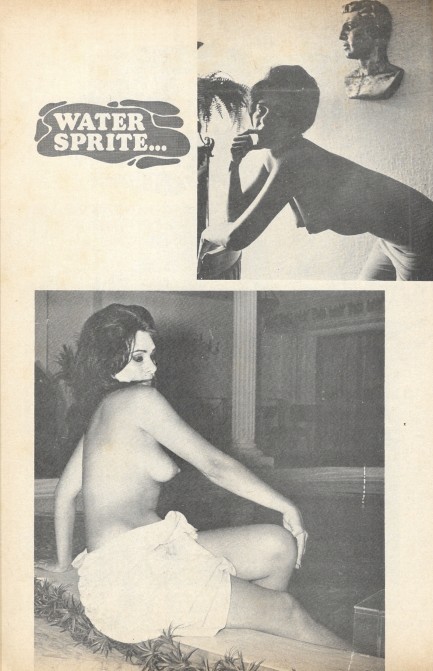   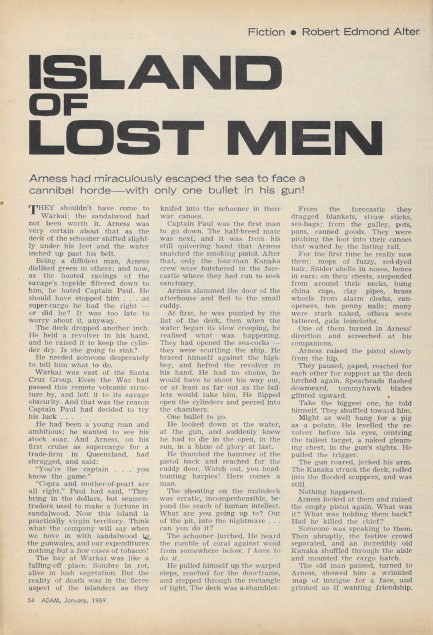 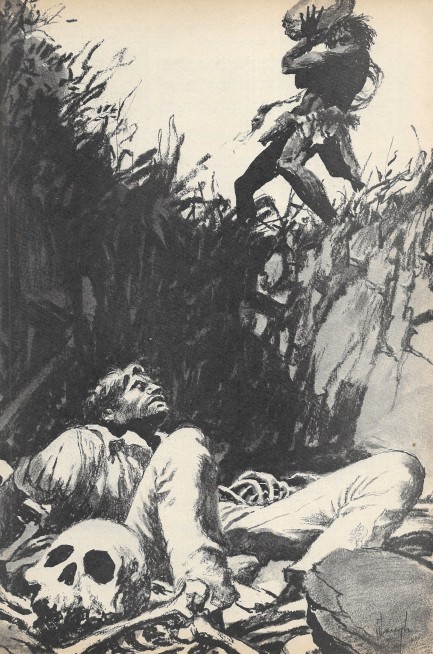  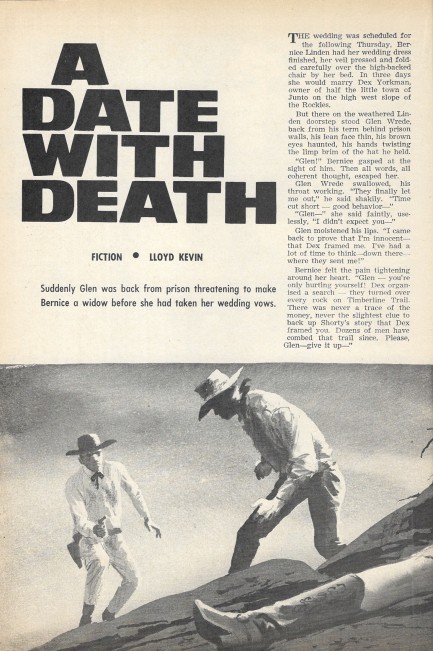 

|
 |

The headlines that mattered yesteryear.
2003—Hope Dies
Film legend Bob Hope dies of pneumonia two months after celebrating his 100th birthday. 1945—Churchill Given the Sack
In spite of admiring Winston Churchill as a great wartime leader, Britons elect
Clement Attlee the nation's new prime minister in a sweeping victory for the Labour Party over the Conservatives. 1952—Evita Peron Dies
Eva Duarte de Peron, aka Evita, wife of the president of the Argentine Republic, dies from cancer at age 33. Evita had brought the working classes into a position of political power never witnessed before, but was hated by the nation's powerful military class. She is lain to rest in Milan, Italy in a secret grave under a nun's name, but is eventually returned to Argentina for reburial beside her husband in 1974. 1943—Mussolini Calls It Quits
Italian dictator Benito Mussolini steps down as head of the armed forces and the government. It soon becomes clear that Il Duce did not relinquish power voluntarily, but was forced to resign after former Fascist colleagues turned against him. He is later installed by Germany as leader of the Italian Social Republic in the north of the country, but is killed by partisans in 1945.
|

|
|

It's easy. We have an uploader that makes it a snap. Use it to submit your art, text, header, and subhead. Your post can be funny, serious, or anything in between, as long as it's vintage pulp. You'll get a byline and experience the fleeting pride of free authorship. We'll edit your post for typos, but the rest is up to you. Click here to give us your best shot.

|
|





































































































































































































